When inflation is low, you feel that you know more about the future, and are much more willing to take risks.
– Peter Bernstein, Economist & Author of Against The Gods
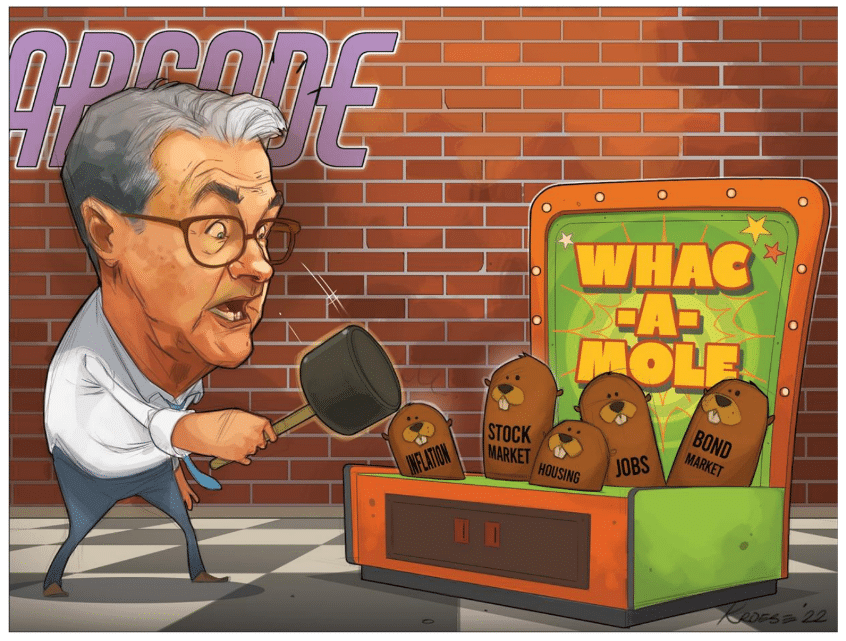
Q3, 2022 Market Review
The third quarter was unusually challenging for U.S. investors as both U.S. large cap stocks (-4.9%) and bonds (-4.8%) declined together
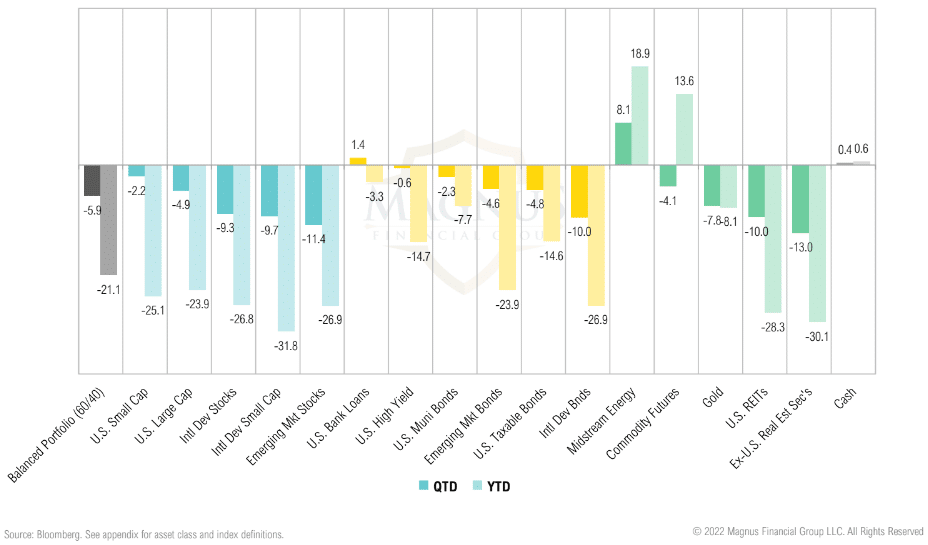
Key Themes for 2023
Era of stubbornly higher inflation – higher inflation underpinned by structural constrained labor, housing and energy markets; increased volatility due to stop-and-start policy leading to bouts of disinflation like 1970s.
Structurally lower real growth, with potential stagflation – inflation erodes real growth; high debt levels, poor demographics and sustained deficits will continue to impede growth in Europe, Japan. Based on the shape of the yield curve and recession models, a recession in 2023 is base case.
Consumers spending themselves into a wall – real incomes lagging inflation; U.S. consumer is incrementally exhausting COVID stimulus, increasingly relying on credit to maintain spending; combined hit from slowing economy and rising interest rates spells trouble for 1H22.
Policy will be stop-and-start but mostly restrictive – mostly constrained but potentially also quite contradictory as rolling ad hoc fiscal (and monetary) bailouts frustrates attempts to rein in inflation.
Be patient, wait for pricing to improve or central banks to pivot – bear markets don’t bottom until equity valuations get cheap and/or central banks pivot (pause ≠ pivot); market has never bottomed ahead of official start of recession and recession unlikely to start until labor market cracks. This time may be different, but the macro backdrop is challenging enough to err on the side of caution.
Tilt to quality and cash flow – the lesson from prior bubble unwinds is patience. While we are excited about the potential opportunity set in equities, we don’t think we are there yet; prefer to “hide out” in areas with strong balance sheets and highest cash flow yields (quality, dividends).
Maintain U.S. emphasis until it is obvious – Foreign stocks have been a value trap for many years; maintain underweights but consider adding to emerging markets when Fed is forced to pivot.
Paid to wait – finally getting paid to wait; better yields on short-term invest. grade bonds reduces the risk of a wait-and-see approach to the rapidly evolving macro, policy and market backdrop, if paired with policy hedges.
Keep duration low – fighting the temptation to increase bond duration because of concerns around path of inflation, Fed’s resolve once labor market breaks or U.S. credit event but maintaining modest duration barbell and gold allocation as a hedge against a premature pivot.
Budding opportunity in high yield bonds, other credit – high yield bonds near compelling level on an absolute & relative basis, except in the tails (right tail = early pivot, inflation; left tail = no pivot, severe recession)
Positive-carry policy hedge – midstream energy, gold miners and commodity futures now have positive carry and may provide a hedge if the Fed pivots early. Conversely, these hedges may underperform in a severe recession.
Opportunities emerging in real estate – maintain underweight (held since pandemic demand shock), waiting for dust to settle on migration, demographic, social and now recession-related disruption; expect to deploy in 2023
Volatility means opportunity – improved opportunity set for value-biased active managers if volatility persists and higher cost of capital rewards nimble fundamental managers.
Opportunity for dynamic asset allocation and active management – a period of stop-and-start growth, inflation, policy and trends in asset markets should benefit dynamic over static asset allocations.
Growth, Inflation & Policy
For the first time in decades, we have seen historic job growth, and workers have begun to see wage gains, gains that your prior actions to stabilize the economy helped achieve. Yet, many workers and their families are struggling under the weight of inflation. As you explained in your September 21, 2022, FOMC remarks, “If your family is one where you spend most of your paycheck, every paycheck cycle, on gas, food, transportation, clothing, basics of life, and prices go up the way they’ve been going up, you’re in trouble right away.” High inflation affecting household needs such as food, healthcare, and transportation strains middle- and lower-income budgets. The Federal Reserve’s tools work to lower inflation by reducing demand for economic activities sensitive to interest rates. However, a family’s “pocketbook” needs have little to do with interest rates, and potential job losses brought about by monetary over tightening will only worsen these matters for the working class.
For working Americans who already feel the crush of inflation, job losses will make it much worse. We can’t risk the livelihoods of millions of Americans who can’t afford it. I ask that you don’t forget your responsibility to promote maximum employment and that the decisions you make at the next FOMC meeting reflect your commitment to the dual mandate.
– Sherrod Brown, Chairman U.S. Senate Committee on Banking, Housing & Urban Affairs
(October 25, 2022 Letter to Jerome Powell)
GDP & Inflation
With the benefit of hindsight, the “great moderation” was just a persistent policy put resulting from historically low inflation
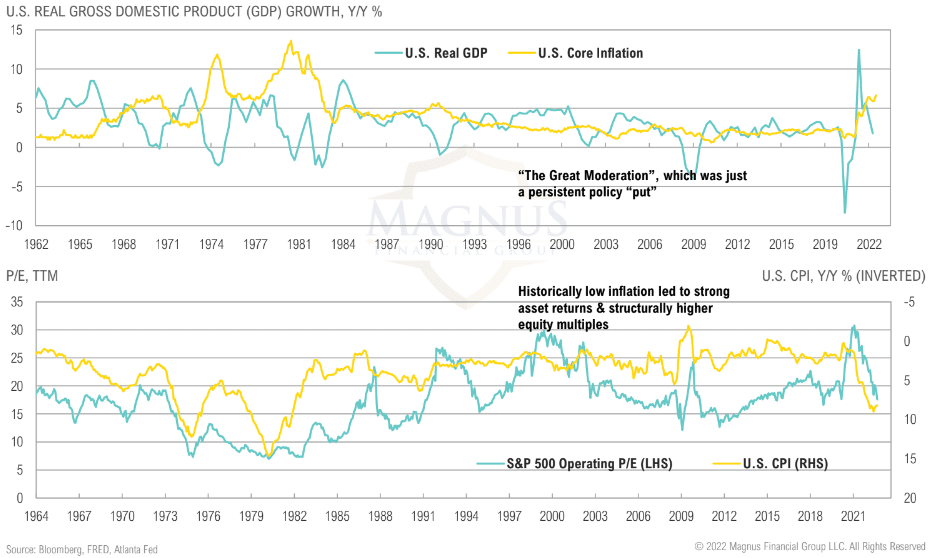
GDP
Most economic models suggest the potential for recession next year is high, arguably assured
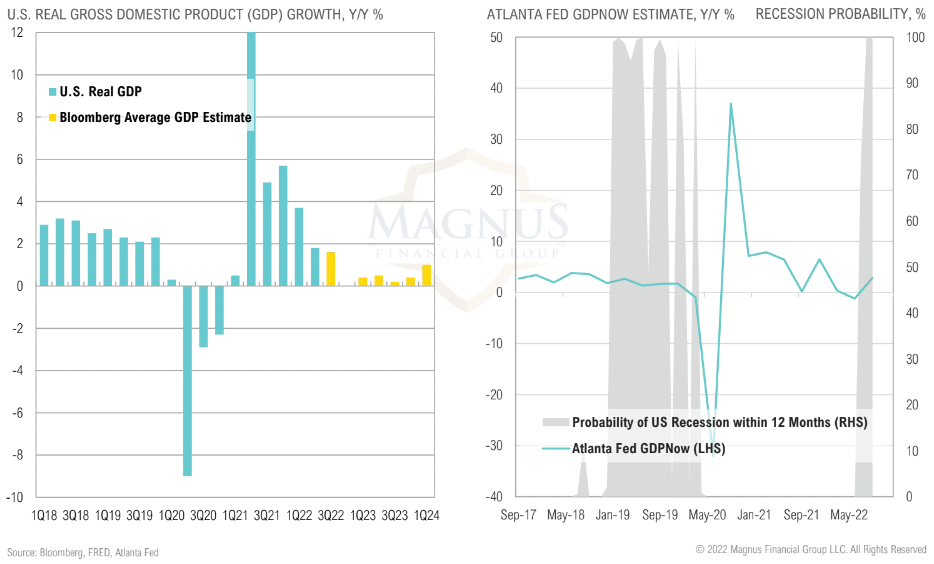
Manufacturing & Inventories
ISM Manufacturing PMI has rolled over; retailers have seen a dramatic increase in inventories; employment expanding in both sectors
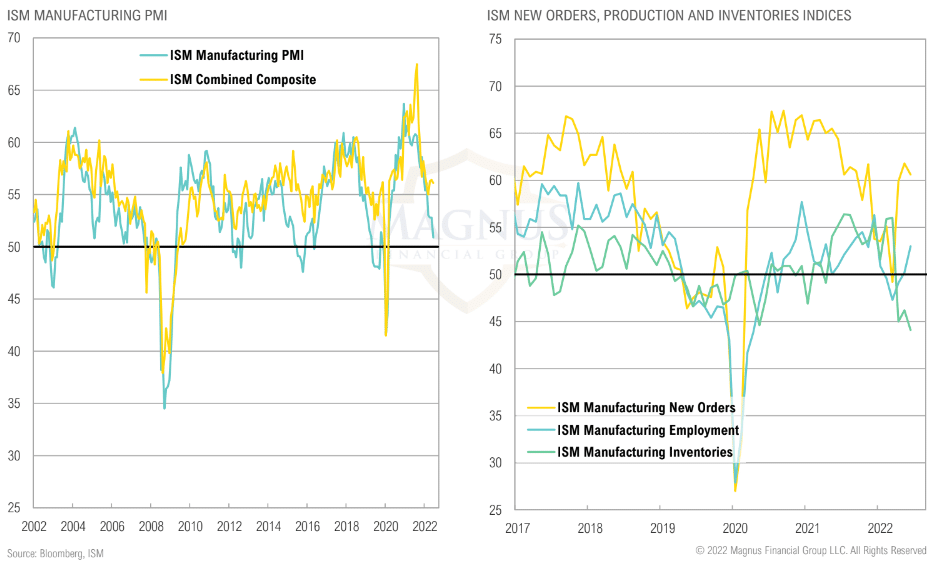
Services & Inventories
ISM services has also rolled over but in much healthier shape as consumer spending shifts from goods to services; employment expanding in both sectors
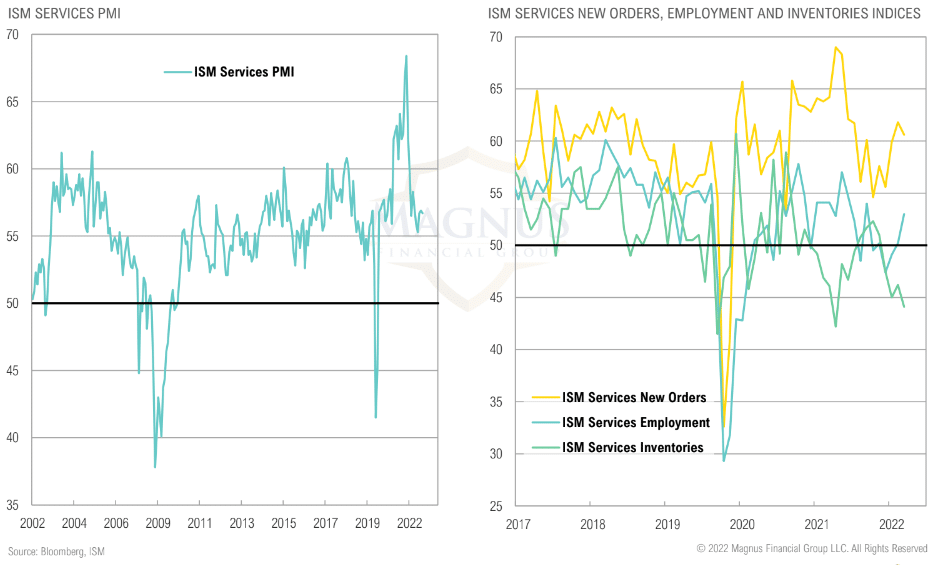
Global PMI
Global manufacturing activity dropped in September as emerging market activity contracted while developed market activity stalled further
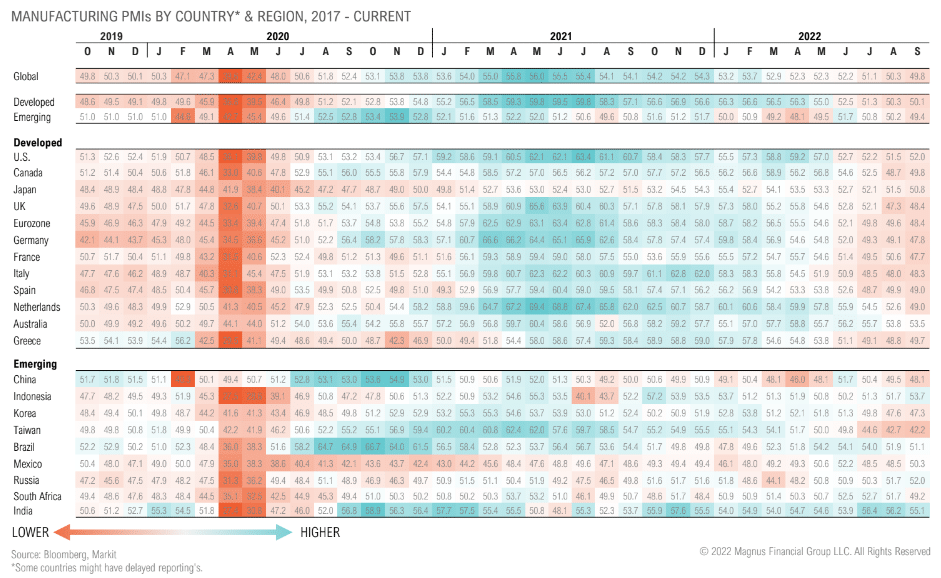
Tips-Implied Inflation
Intermediate-term inflation expectations have eased after breaking out to multi-decade highs, but they remain tethered to rallies in risky assets, frustrating the Fed
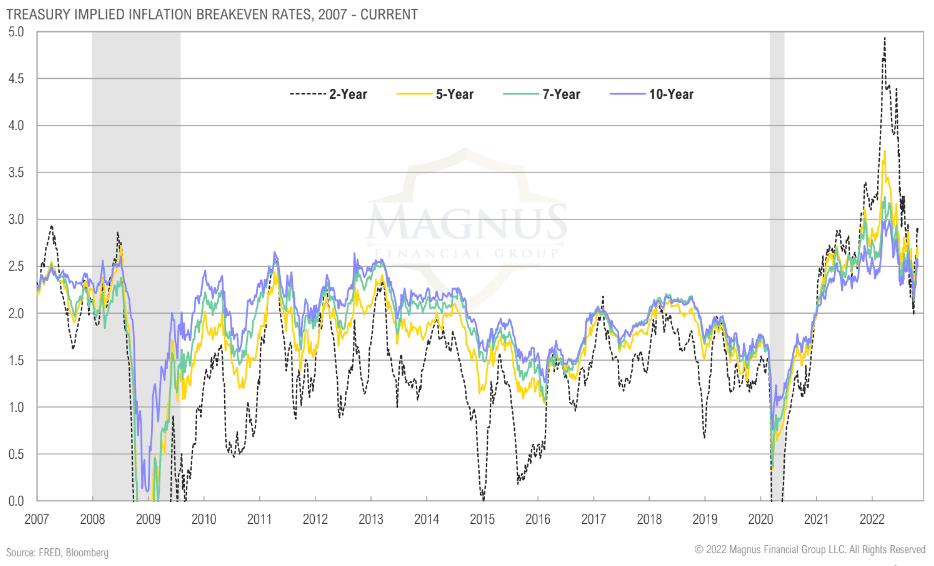
Global Inflation
Pre-Russian invasion, global inflation was already at a decade-high due to lack of investment in commodity supply, labor tightness, rising housing prices, supply chain bottlenecks, etc.
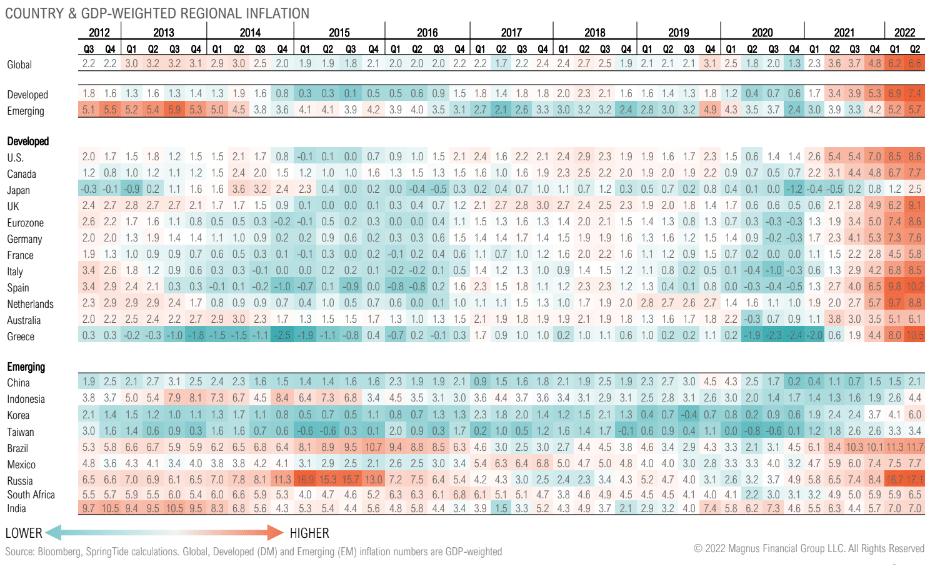
Inflation Surprise
Inflation Surprise Index has rolled over, but from an extreme level; still surprising forecasts on a global scale, a first since 2008
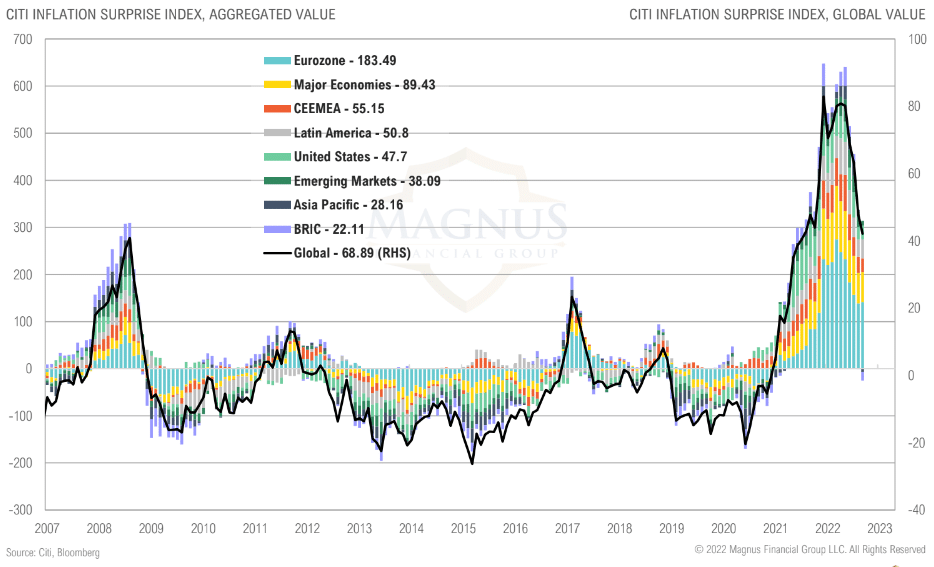
Commodities & Shelter
While commodity prices rolling over will help contain inflation, house prices impact the shelter component of CPI with a 12 to 18-month lag
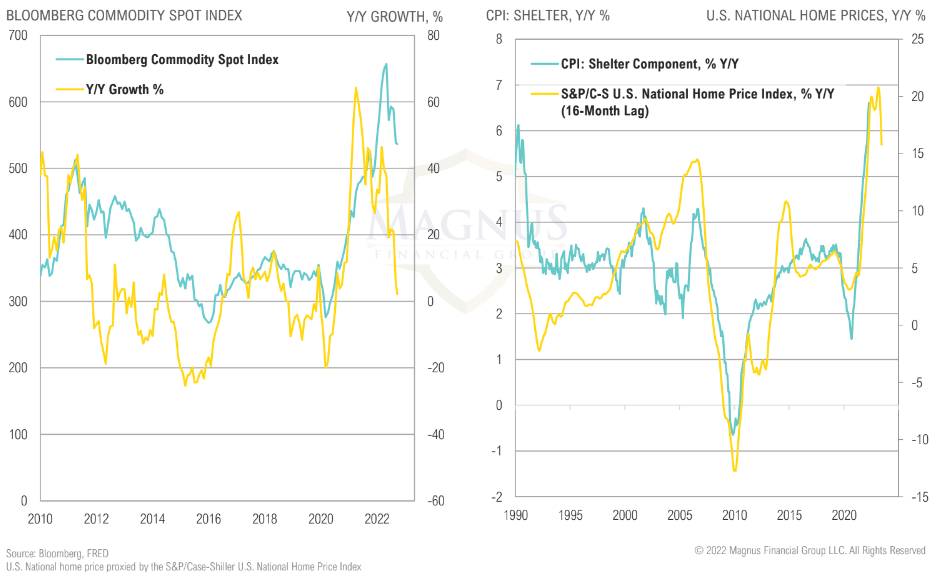
CPI
It is likely that YoY CPI will remain above 5% through Q1 of 2023
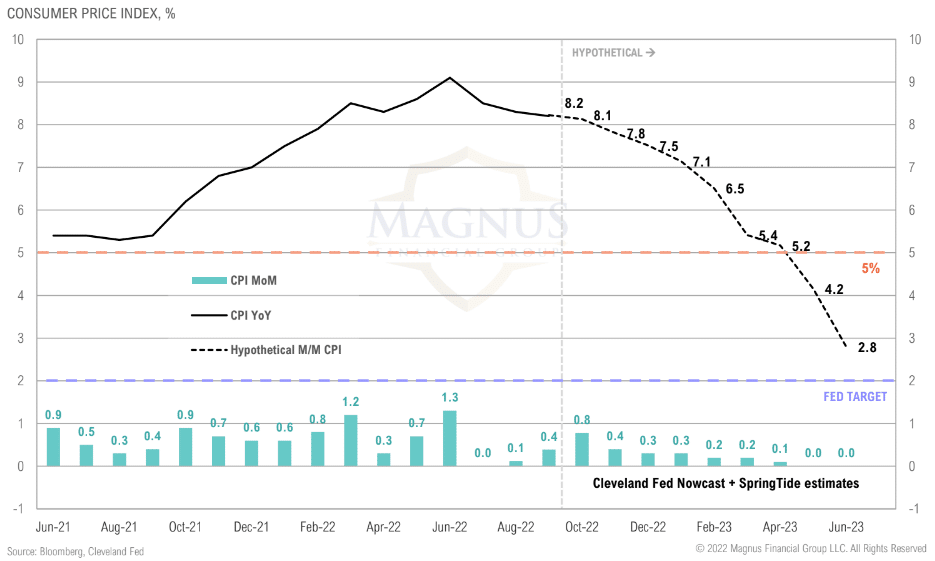
Implied Fed Funds
Yield curve moved higher after the last two CPI prints as market continued to underestimate the stickiness of inflation
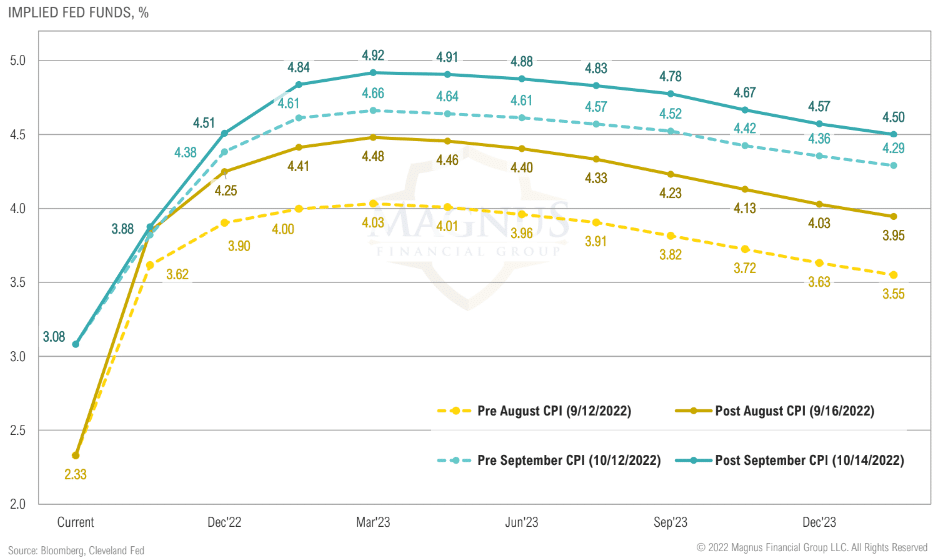
2-Year Treasury vs Fed Funds
Fed funds rate is catching up with the 2-year yield as market thinks it has dialed in on an expected terminal Fed funds at around 5.0% within next couple of meetings
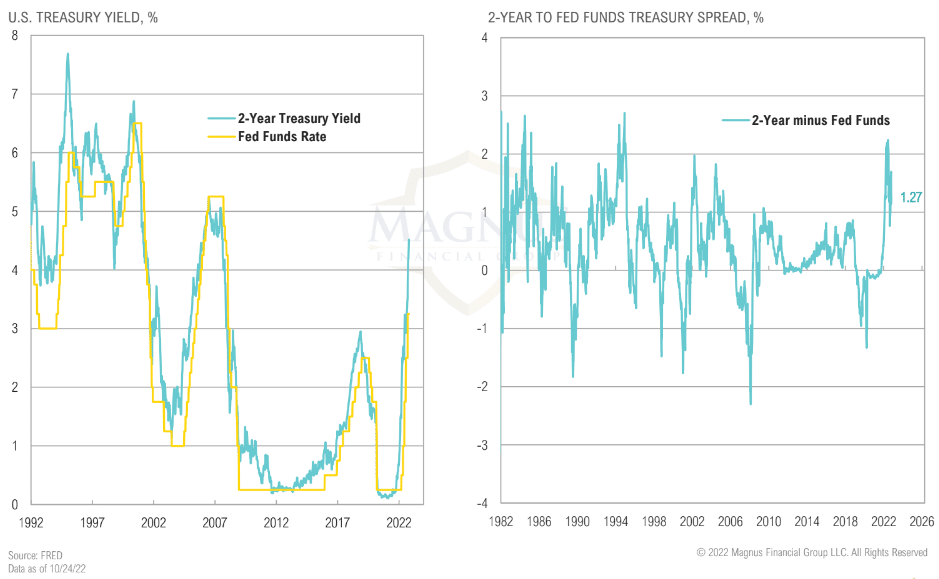
Rate Hike Expectations
Fed funds futures expecting peak rates in March 2023 and the Fed to start cutting rates later next year
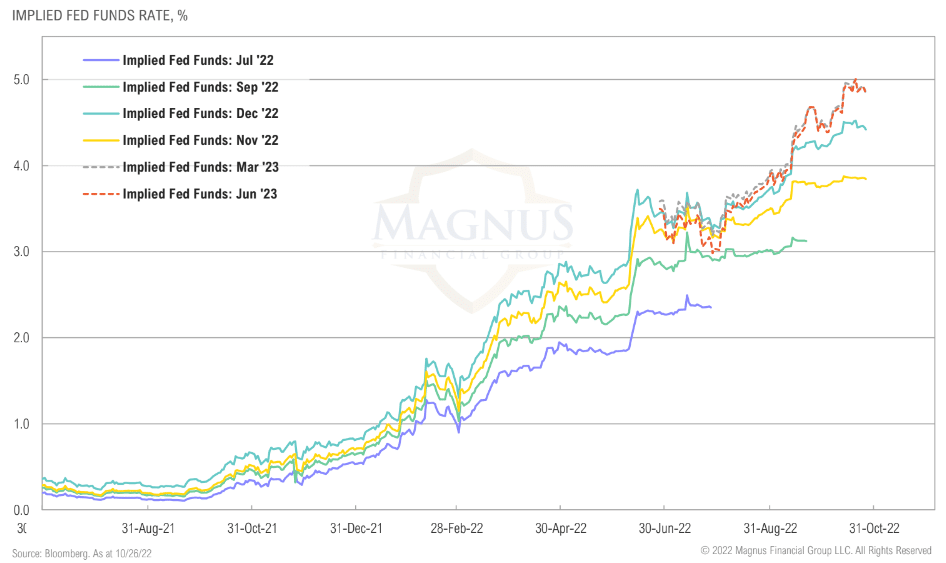
Mortgage Rates
30-year fixed mortgage rates spiked in September as mortgage rate spreads vs. 10-year Treasury widened; higher rates will have a negative impact on housing and consumers with a lag
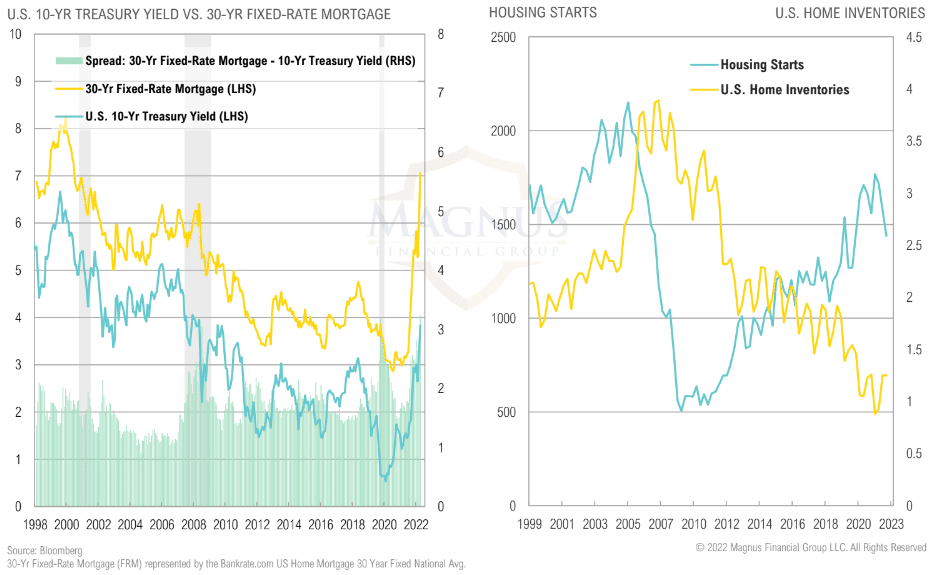
Real Earnings
Since early 2021 inflation has outpaced wage growth, eroding real household disposable income

Personal Income
Real Income, excluding government transfers, is still grinding higher; total disposable income, however, has been treading water in recent months
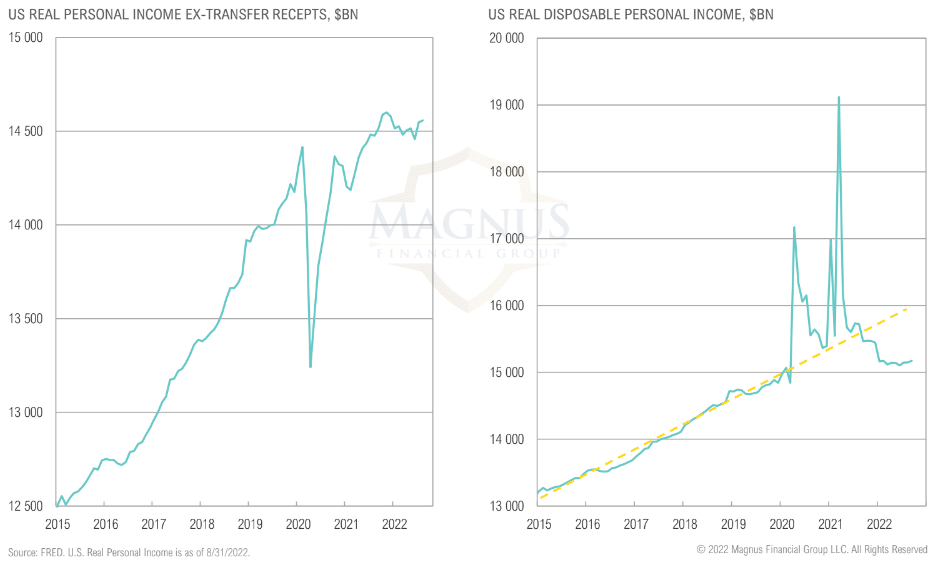
Debt Service & Revolving Credit
Consumer revolving credit has continued to increase, causing the household debt service ratio to rise
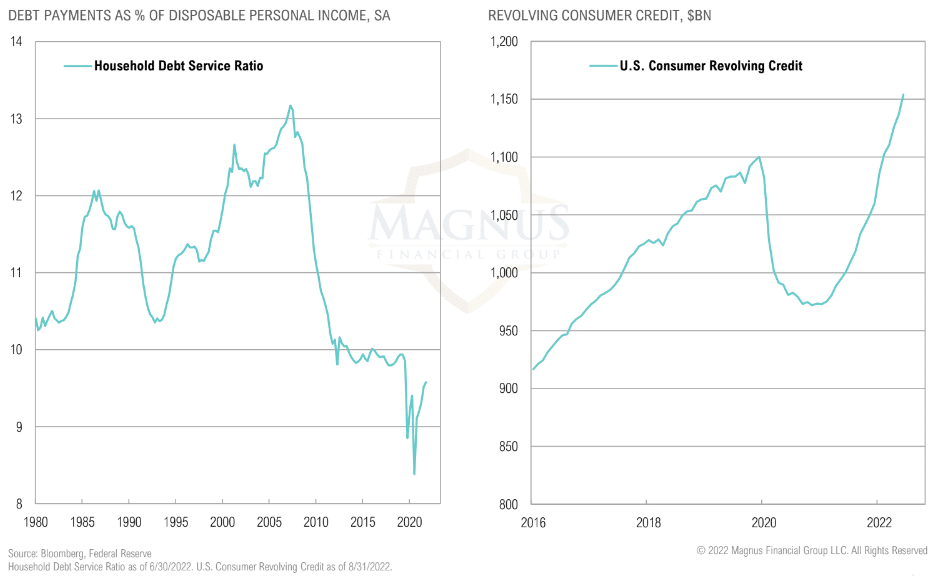
Personal Savings & Consumer Credit
Consumer revolving credit has continued to increase, causing the household debt service ratio to rise
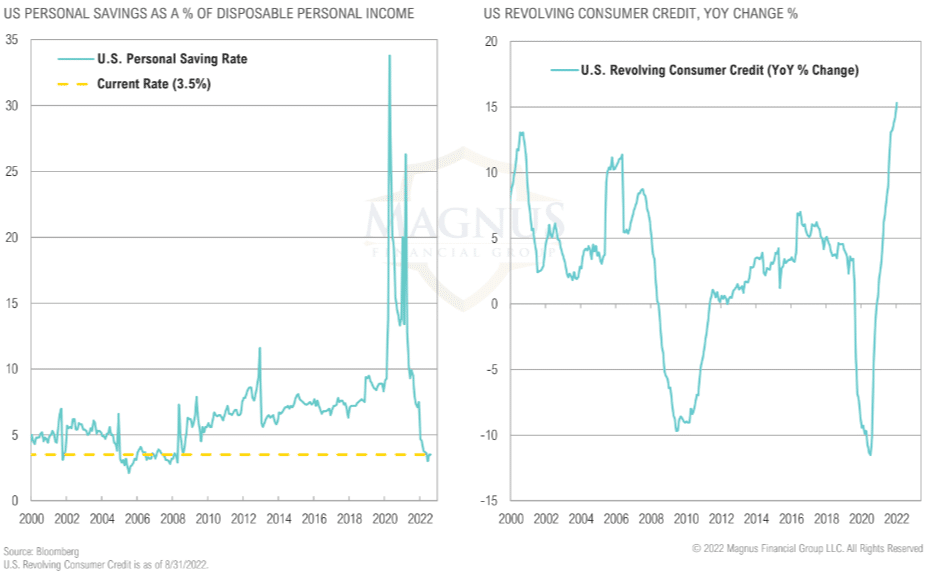
Opportunistic
Monetary Policy & Global Stocks
Consumer revolving credit has continued to increase, causing the household debt service ratio to rise
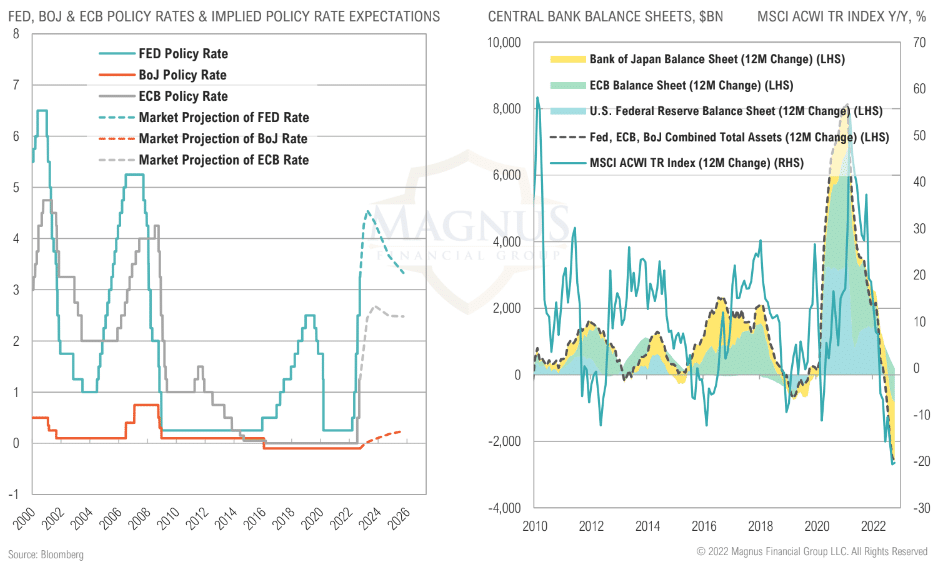
Growth, Inflation & Policy
Transit Activity
Consumer revolving credit has continued to increase, causing the household debt service ratio to rise
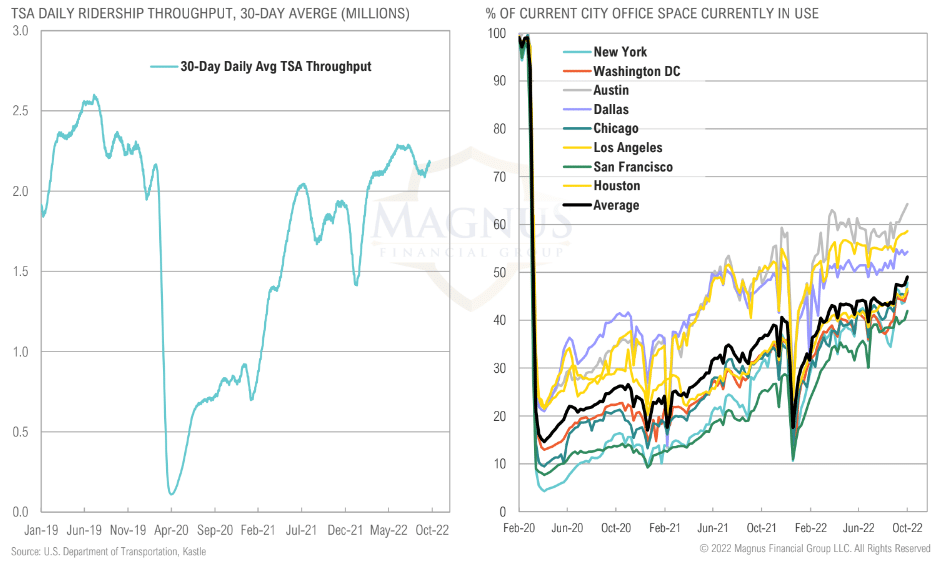
Energy Prices & Approval Rating
Biden’s SPR dump helped ease gas prices & inflation pressures, helped contribute to a modest improvement in sentiment (& his approval rating), but gas price trends may soon reverse
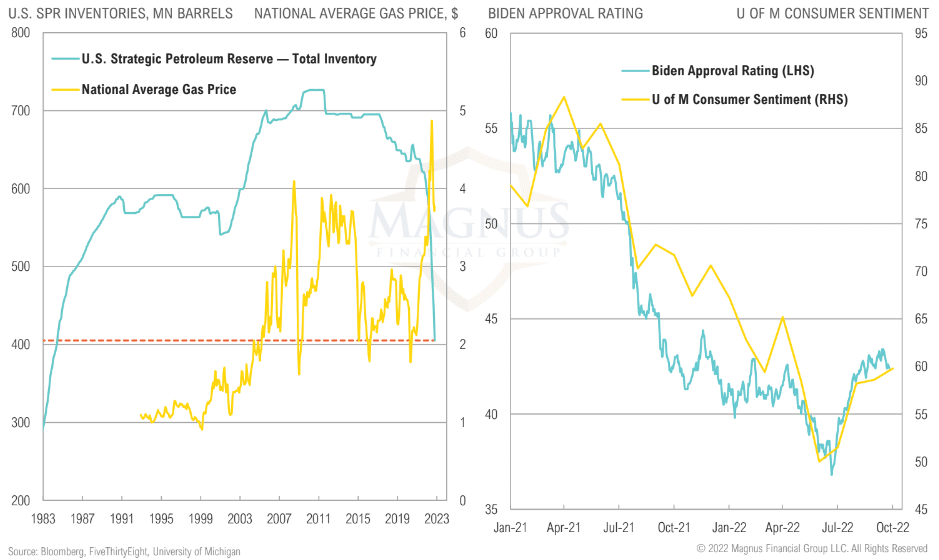
Midterms
Looking ahead to November, the race for Senate control will rely on a select few toss-up states
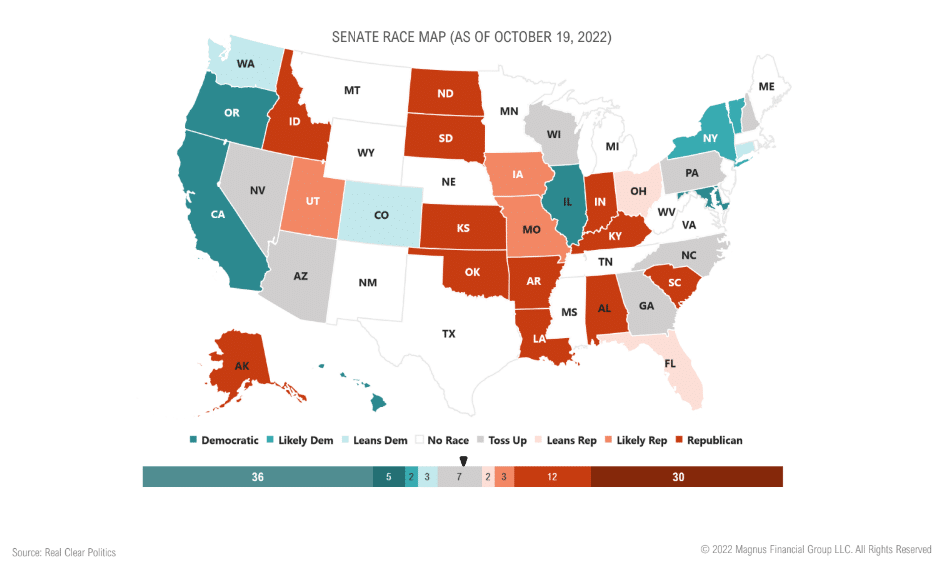
Russia vs Europe
Looking ahead to November, the race for Senate control will rely on a select few toss-up states
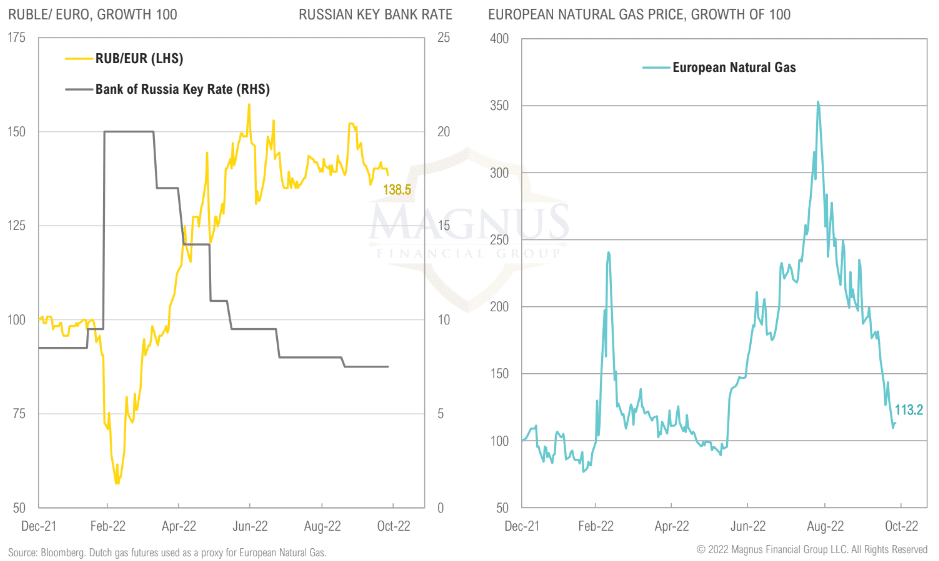
The Fed Pivot Index
A Fed pivot at current levels isn’t justified by the data and would risk extending inflation shock and further eroding Fed’s credibility
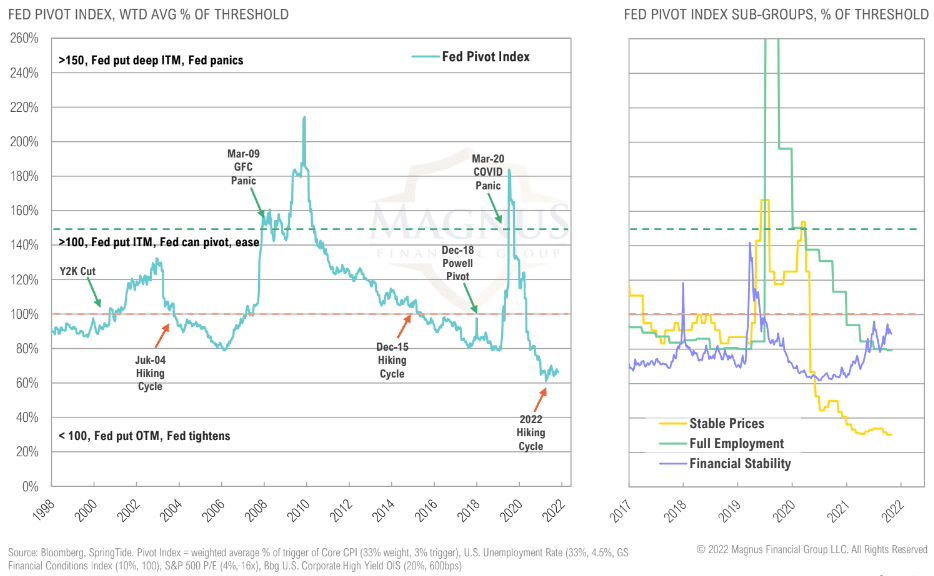
The Fed Pivot
Average “pivot” (end of hiking cycle) since WWII saw Fed funds at 7.9%, headline inflation at 5.5%, core inflation at 5.0%, and the unemployment rate at 5.3%… We’re just not there yet!
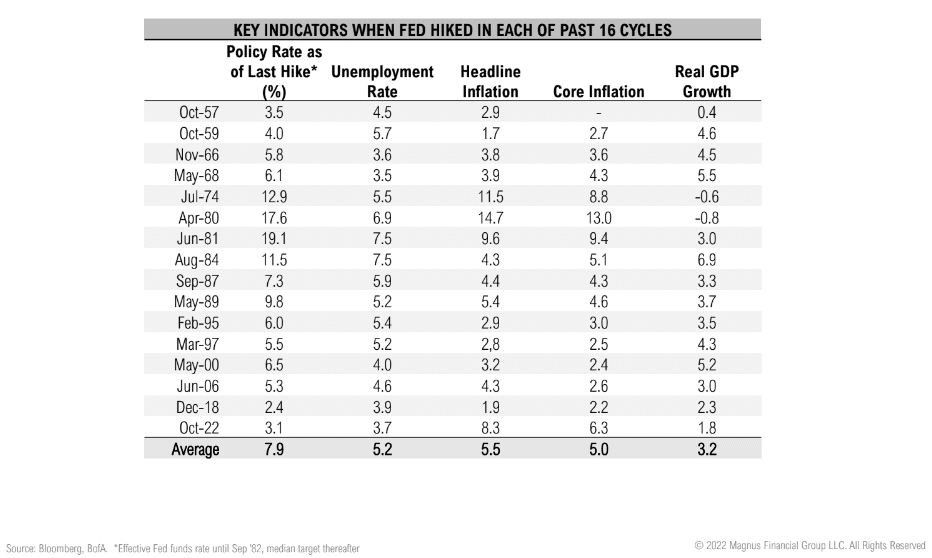
Equity
Excesses in one direction will lead to an opposite excess in the other direction.
– Bob Farrell, Merrill Lynch Strategist and Market Historian (Bob Farrell’s 10 Rules)
Market Returns Summary
Despite dropping back into bear market territory, U.S. stocks have outperformed their international peers this year; EM underperformed over the quarter
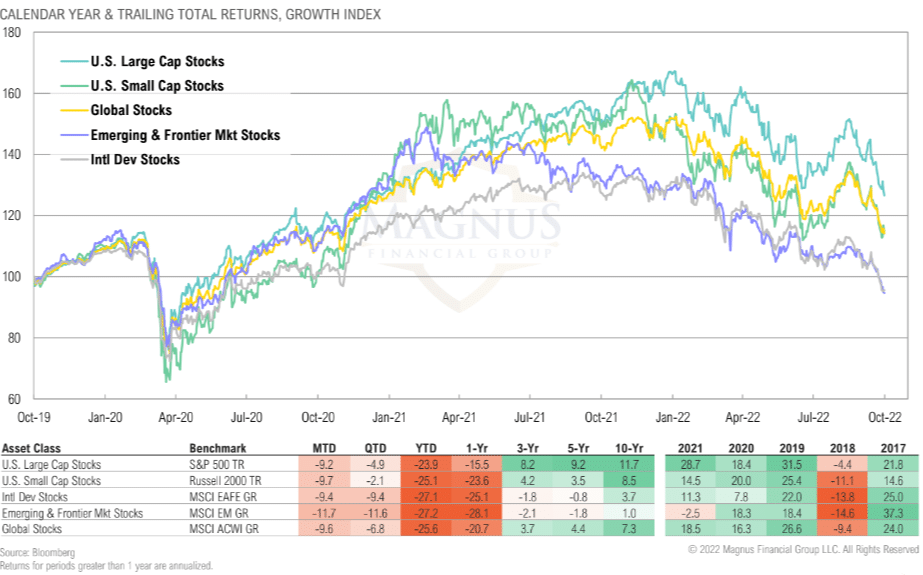
S&P 500 Valuations
Forward valuations have improved due to bear market, slightly below average relative to history; focus now shifts to earnings decline; history suggests baseline should be at least 20% drop
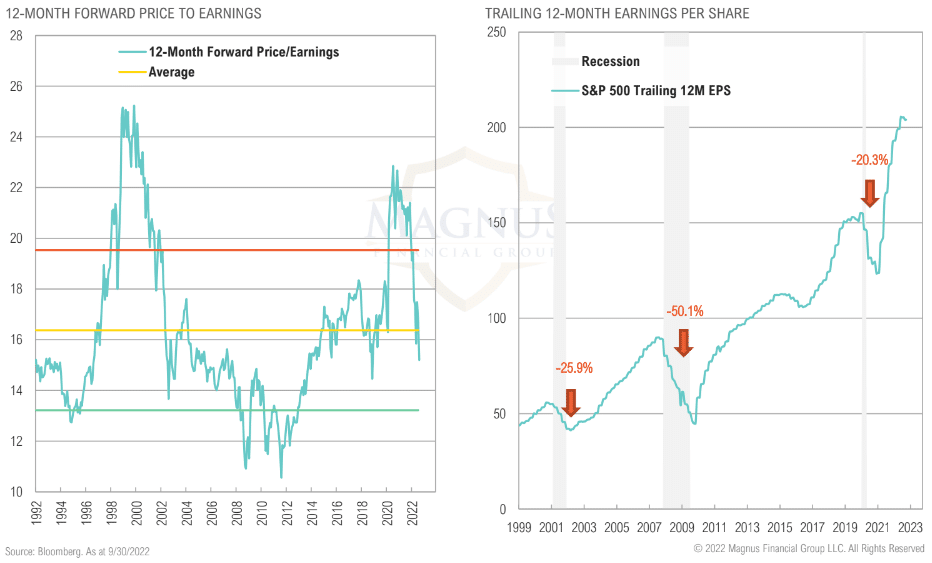
Adjusting for record-high margins, equity valuations are not compelling
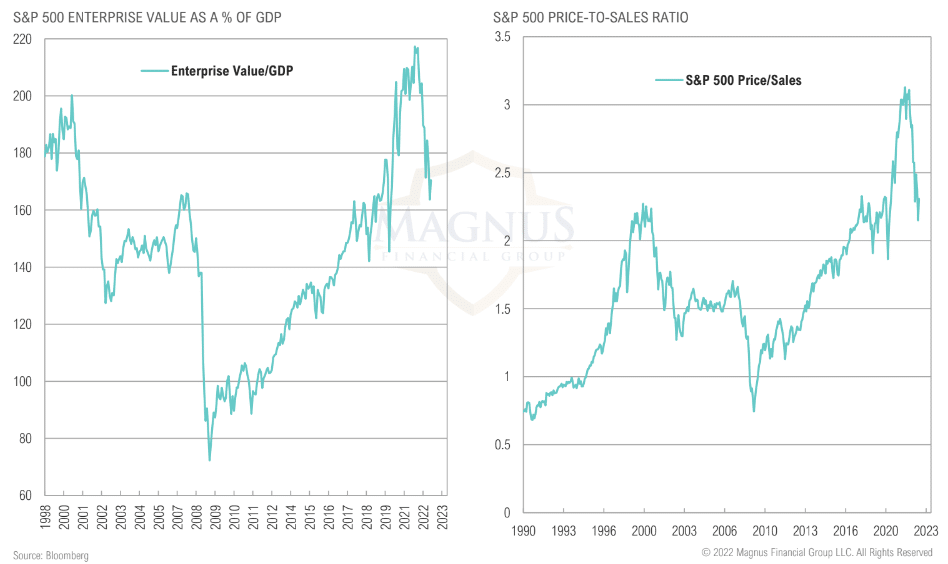
Sector Returns
Energy ahead of consumer discretionary, tech and real estate by approximately 90% year-to-date
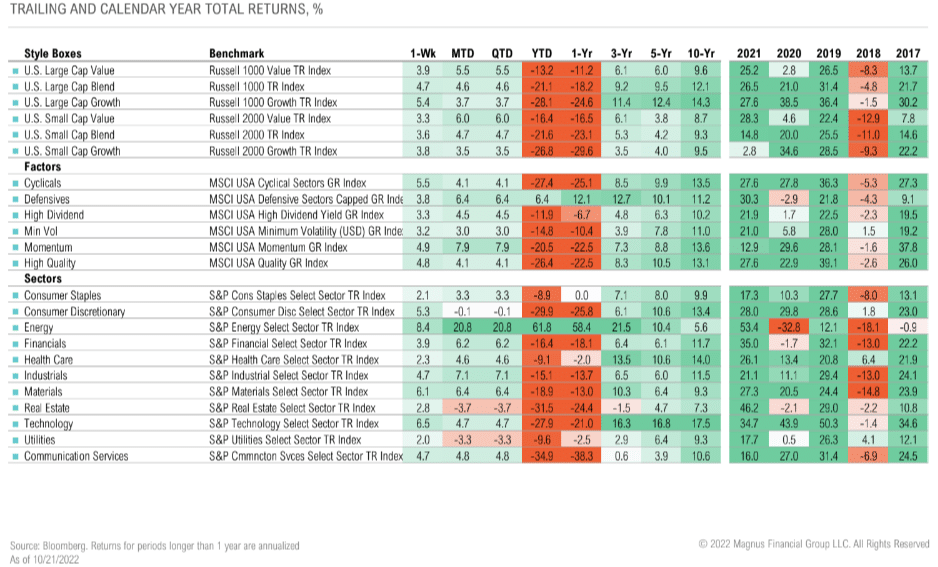
Earnings
Analyst EPS expectations remain high, but have started to decline
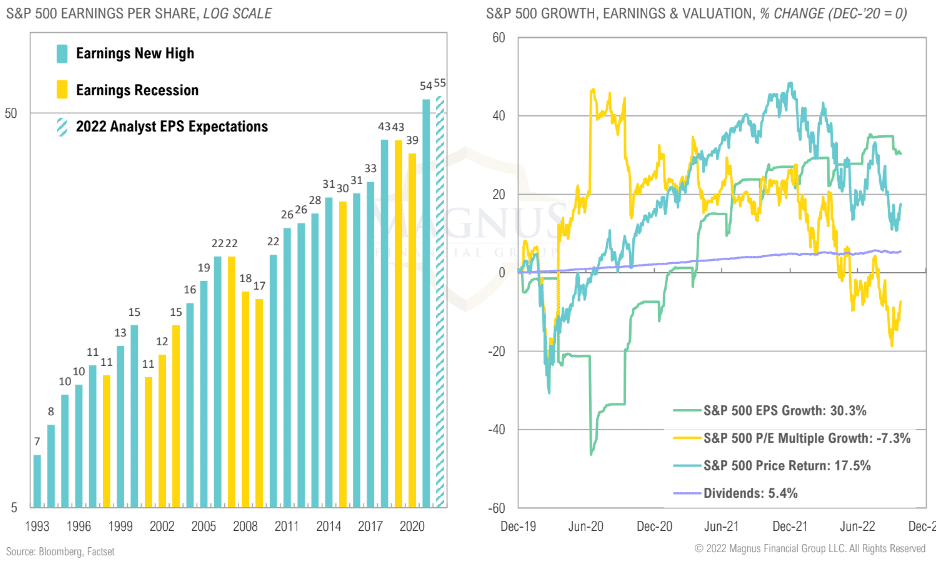
Valuations vs Forward Returns
Forward P/Es have little predictive power for one-year forward equity returns, but have been reasonably predictive over longer time horizons
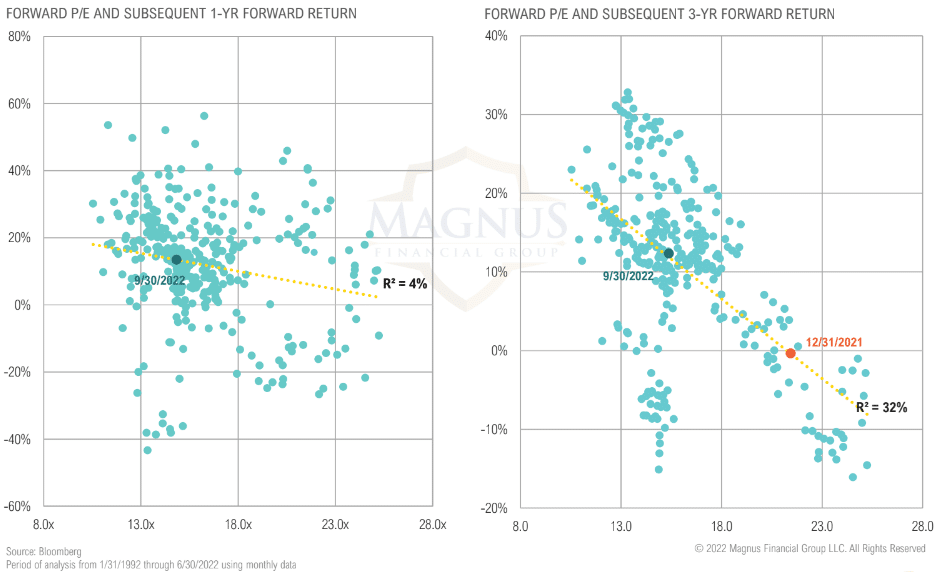
Valuations
Valuations continue to contract so far this year
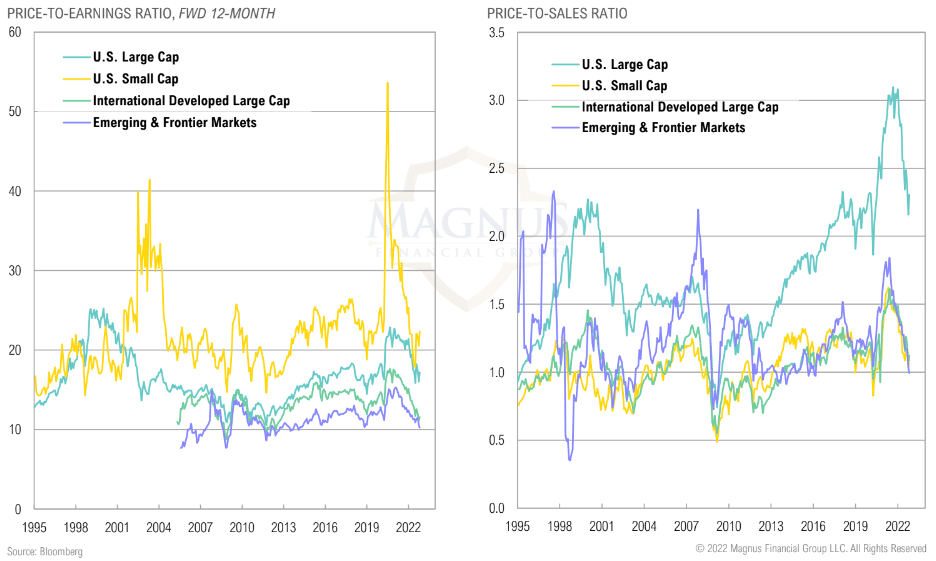
Value vs Growth
Forward-looking valuations improved dramatically, but earnings estimates will now come into question given potential margin pressure; value still looks relatively cheaper (i.e., this is not 2008-2010)
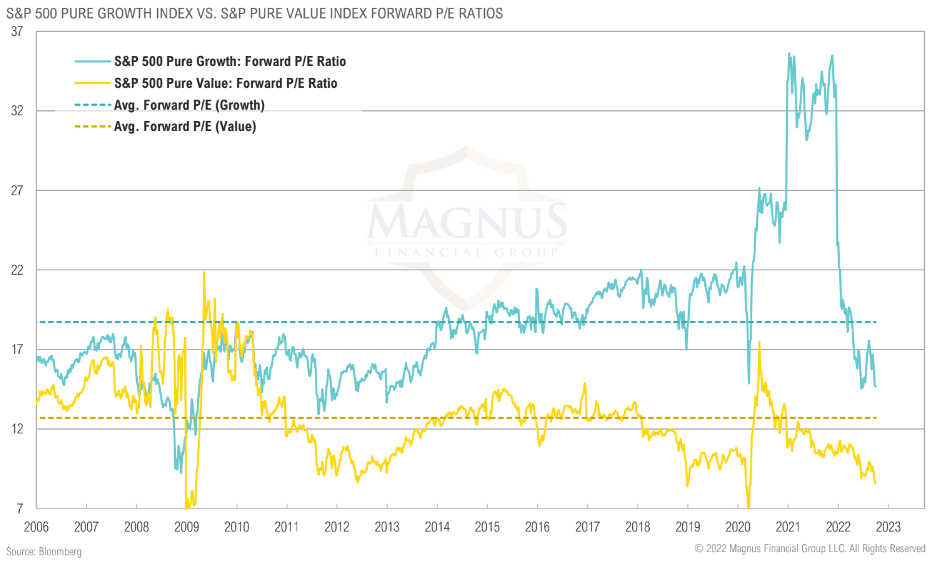
Valuations
Within small cap value, valuations are below average, but not at levels typically seen in major market drawdowns
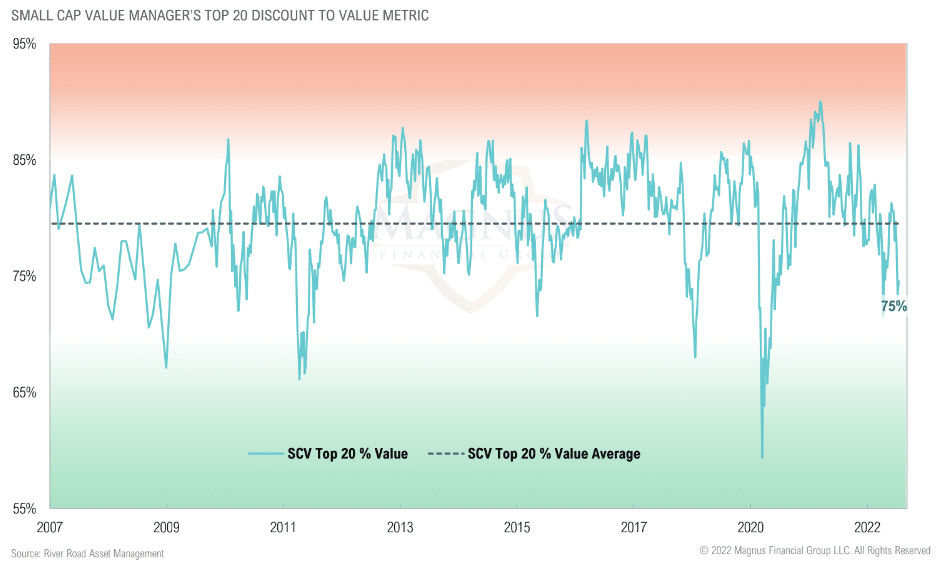
Growth valuations seem attractive when accounting for high growth expectations, but they are not attractive on an absolute level
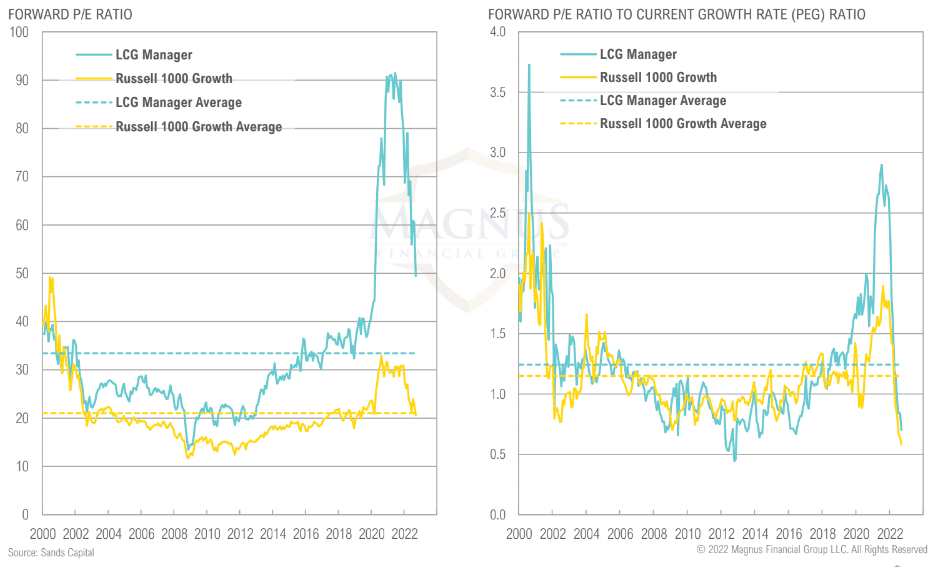
Sales & Earnings Growth
Nominal sales and earnings growth expected to decelerate for remainder of 2022; impact of inflation and potential recession huge wild cards next year

Earnings vs Inflation
Historically, inflation has been a significant issue for the stock market when it is above 4%, even more so when above 6%
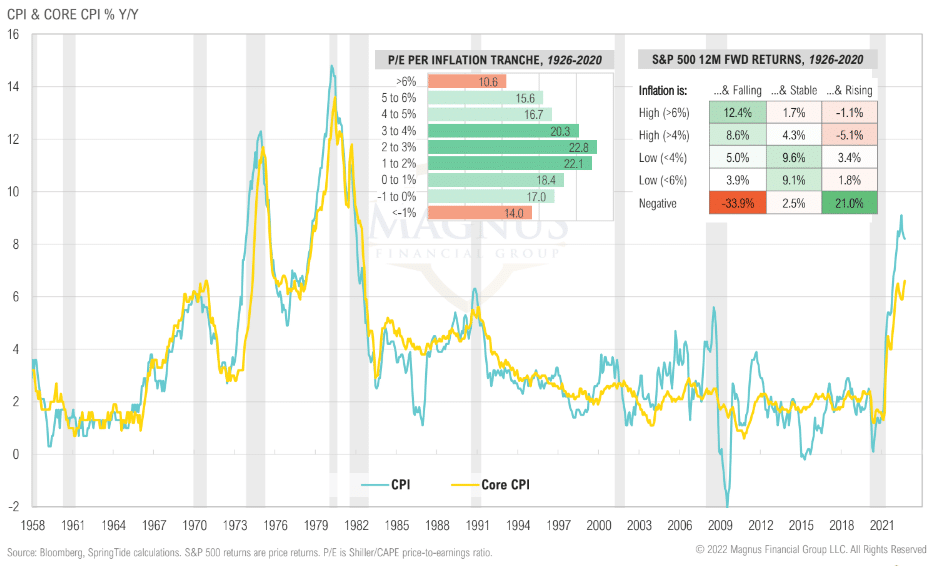
Relative Sector Performance
Market internals point to consumer stress; energy breaking out
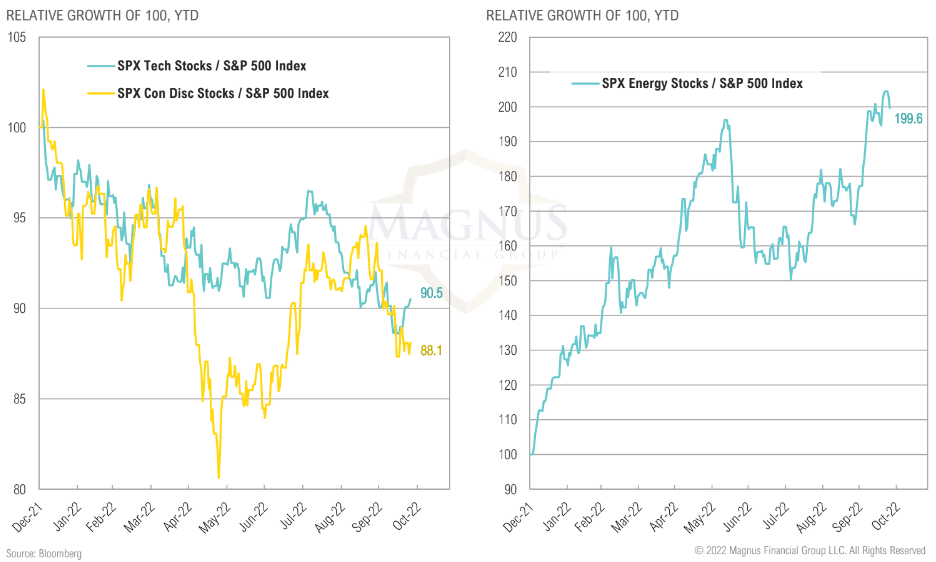
S&P 500 Equity Risk Premium
Despite being in a bear market, stocks are arguably less attractively priced vis-à-vis bonds than they were coming into the year
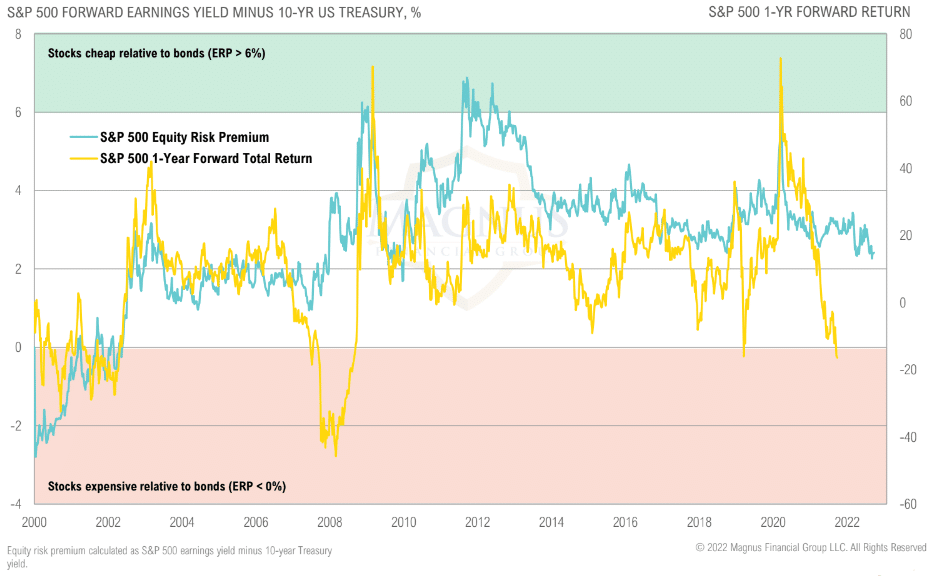
S&P 500 Valuations
The S&P 500 real earnings yield is still negative and substantially lower than previous bear market lows
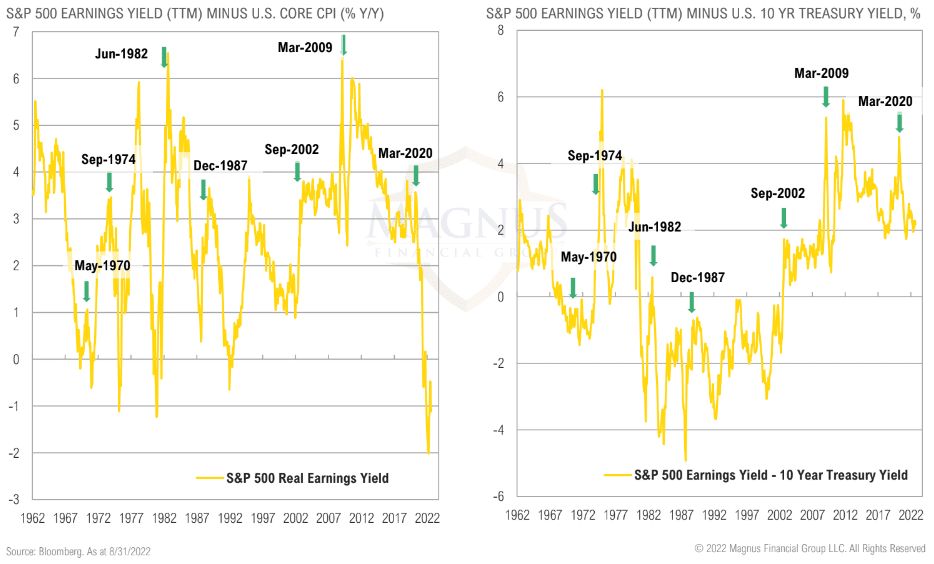
P/E Multiples
Tranching in equities: P/E multiple levels to consider are 16x, 14x, and 12x, applied to various levels of earnings decline
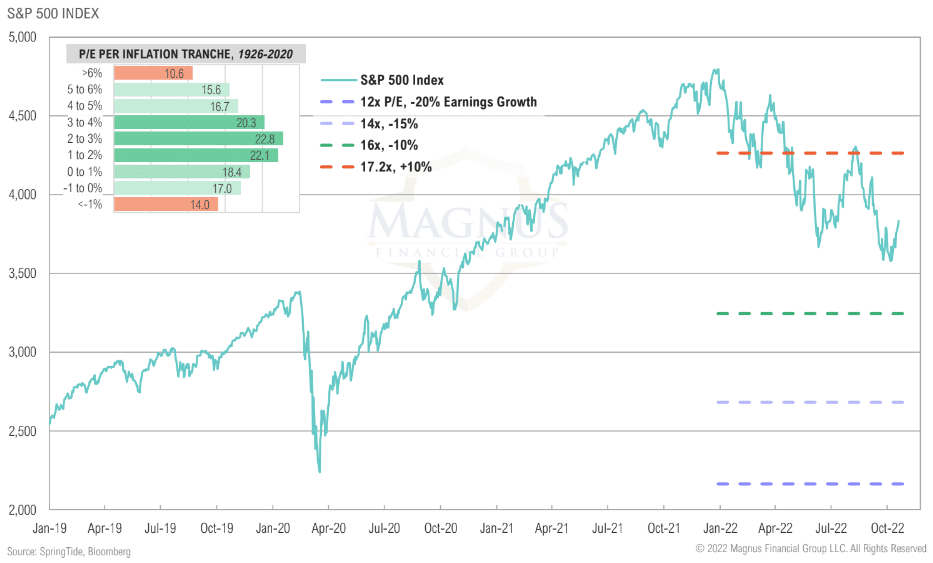
Hiking Cycles & Returns
Fast hiking cycles correlate with poor returns following first rate hike; this cycle’s hike pace combined with QT make it more restrictive than this chart suggests
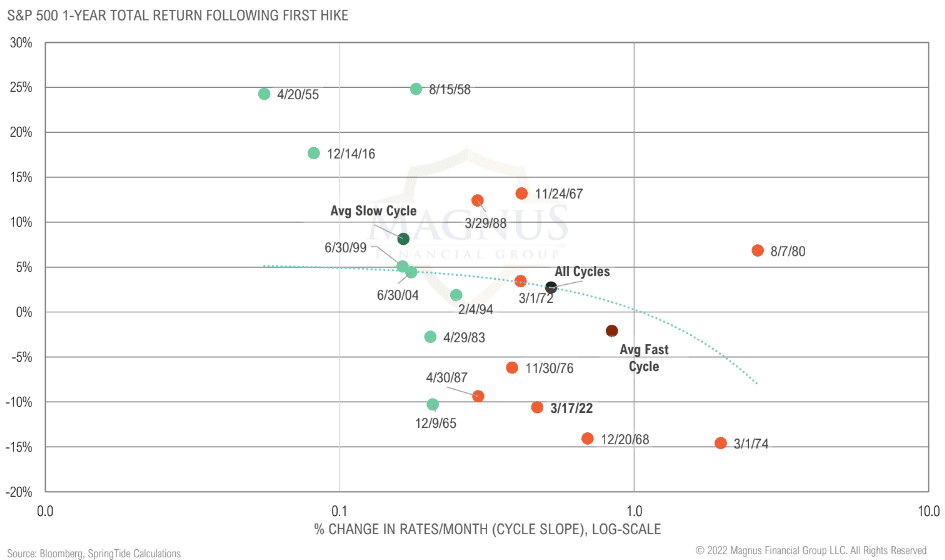
Private Equity
Private equity funds have not marked down their portfolios like they did in the GFC
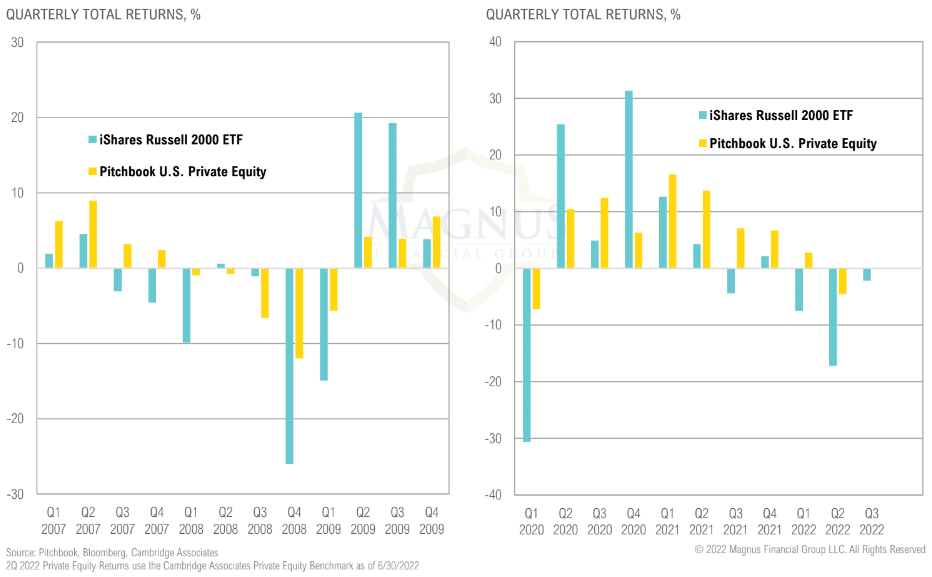
Private Real Estate
The same dynamic is happening in private real estate

Venture Capital
Venture valuations remain high while exits are on pace for lowest year since 2016
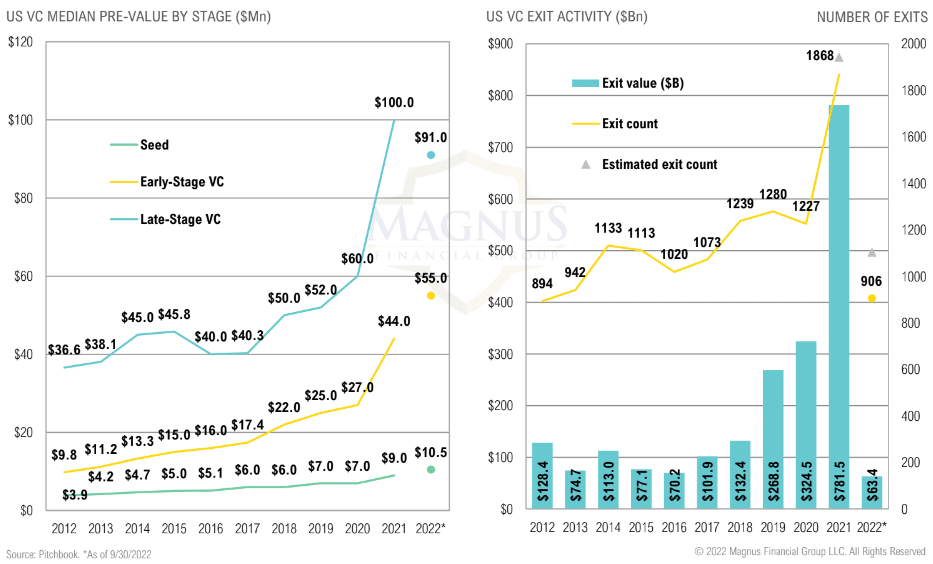
Private Equity Secondaries
Secondaries fundraising activity on pace for a 10-year low
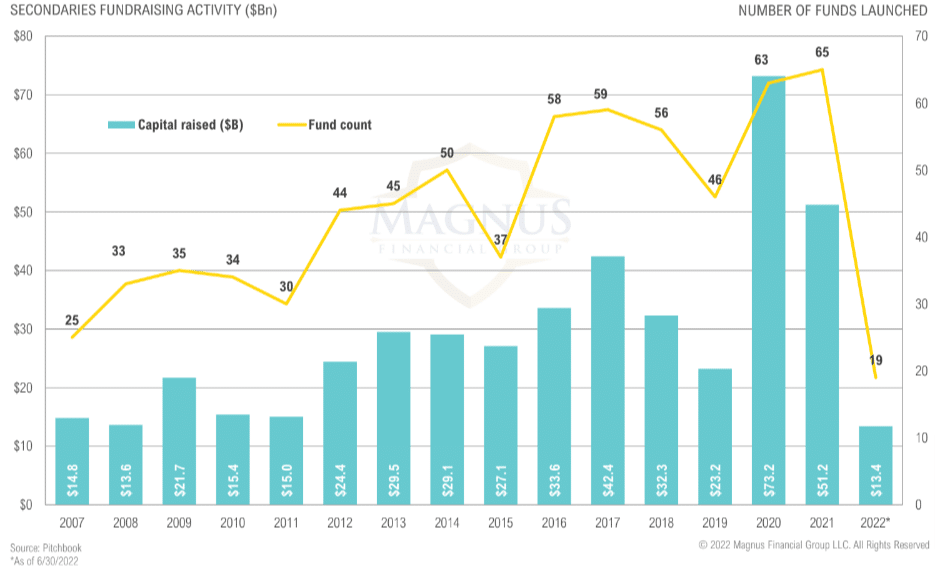
Fixed Income & Credit
I trust that many of you are familiar with the story of Peter Pan, in which it says, ‘the moment you doubt whether you can fly, you cease forever to be able to do it.
– Haruhiko Kuroda, Bank of Japan governor, February 12, 2016 (describing their unorthodox monetary policy)
Market Returns Summary
Most U.S. fixed income and credit asset classes were down over the quarter; international developed bonds fared the worst and are now down over the last decade
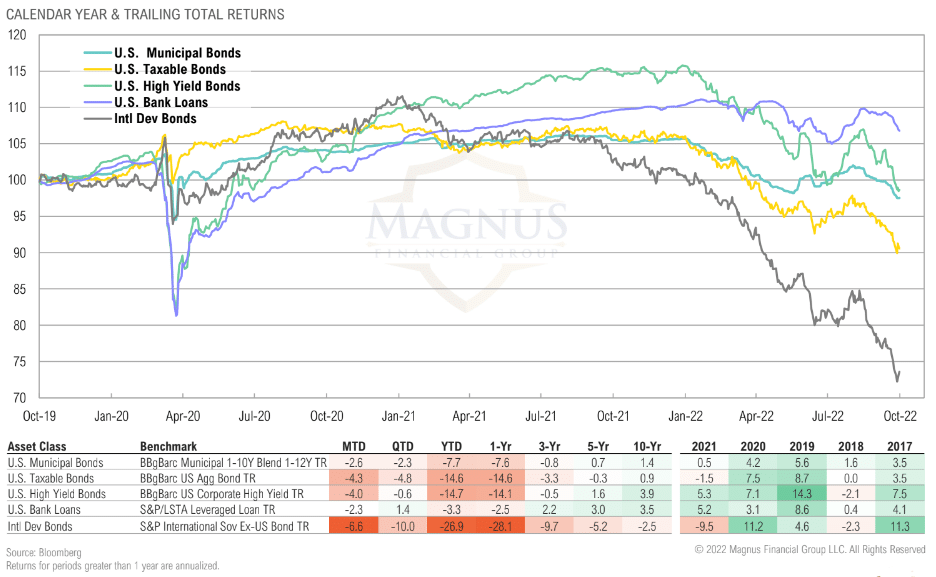
Treasury Market
The treasury market has been an enabler of increasing deficit spending and debt levels…is it now “Fed up”?
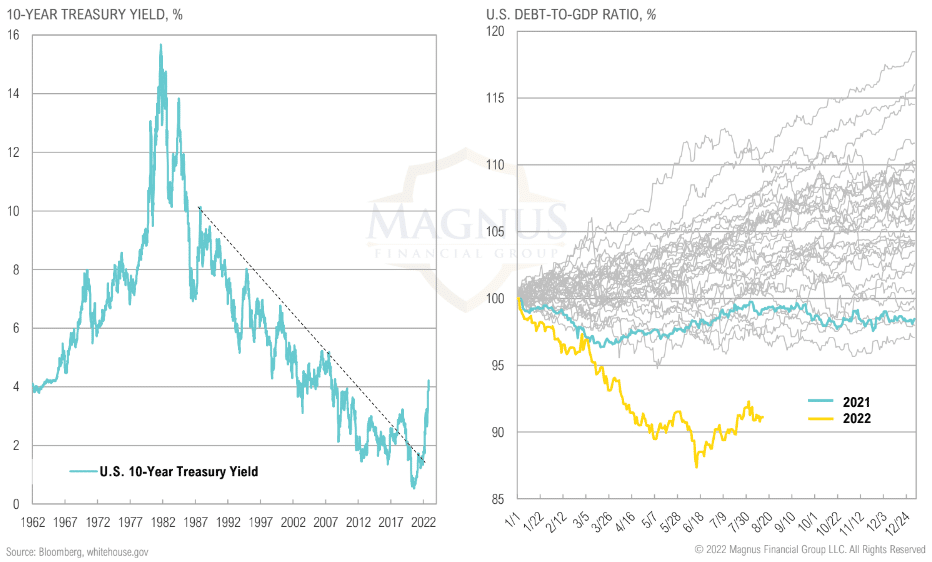
The treasury market has been an enabler of increasing deficit spending and debt levels…is it now “Fed up”?
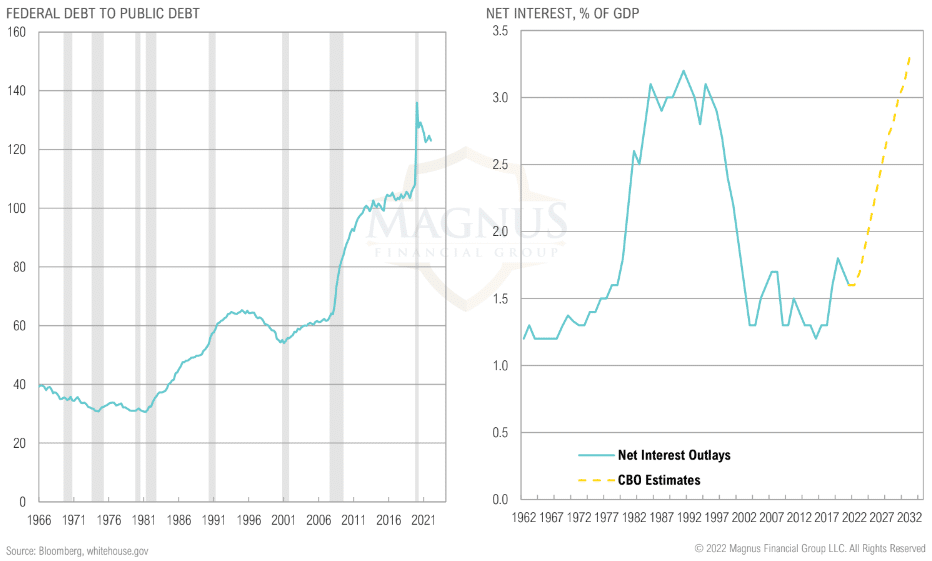
The treasury market has been an enabler of increasing deficit spending and debt levels…is it now “Fed up”?
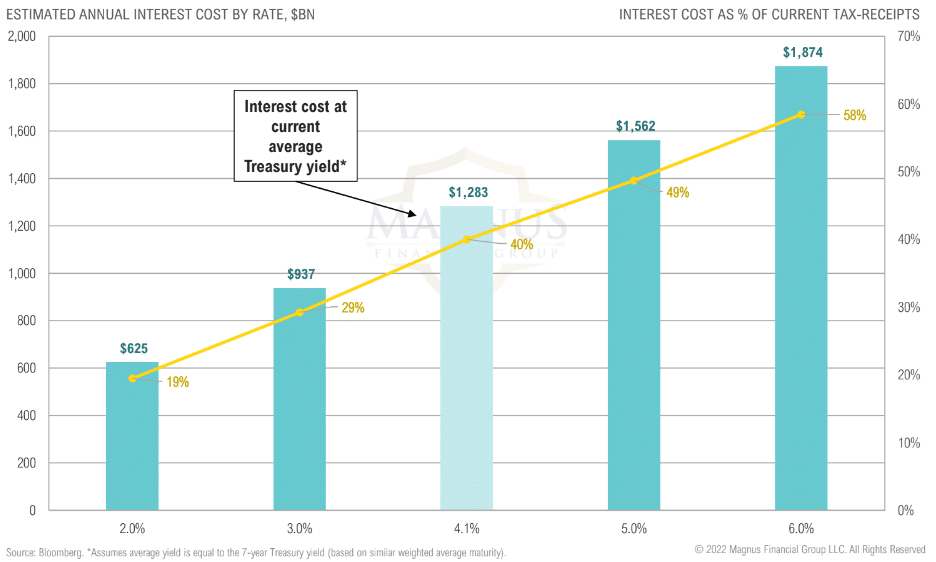
Global Yields & Dollar
Market increasingly punishing policy mistakes, especially when you’re not the global reserve currency
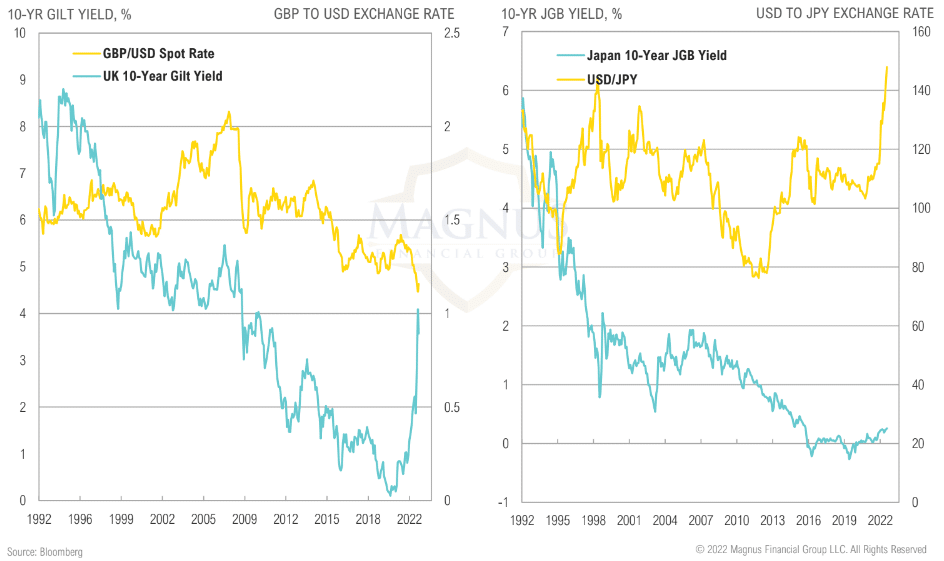
Treasuries vs JGB's
The yen has weakened to a 20-year low against the dollar as the BOJ continues its infinite QE; US Treasuries remain attractive vs JGB’s
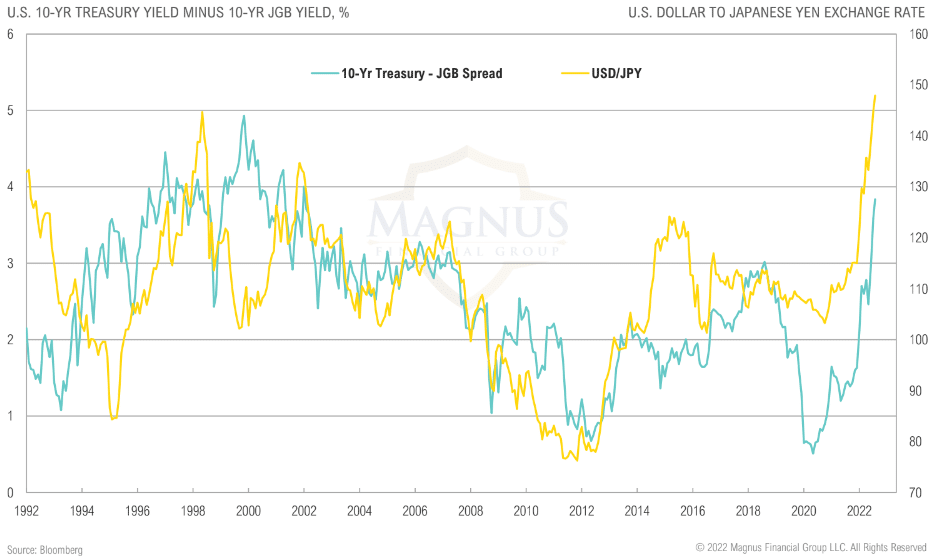
Real Interest Rates
Context for current monetary policy disaster: the Fed fell so far behind the curve that unless inflation rolled over by itself, they forced themselves to have to hike into an economic slowdown/recession
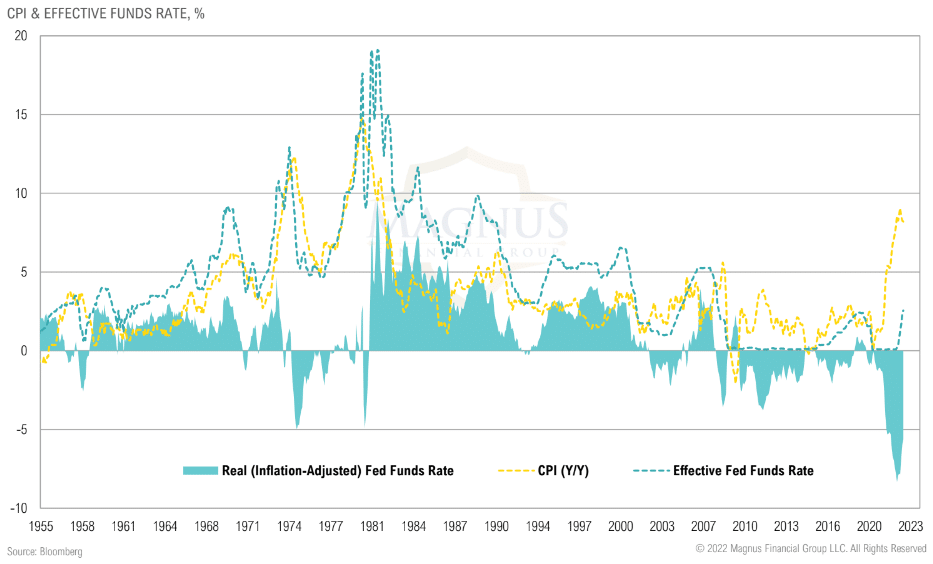
Spreads by Sector
Credit spreads at or modestly above average across most sectors; starting to shift up modestly as recession fears start to become more entrenched
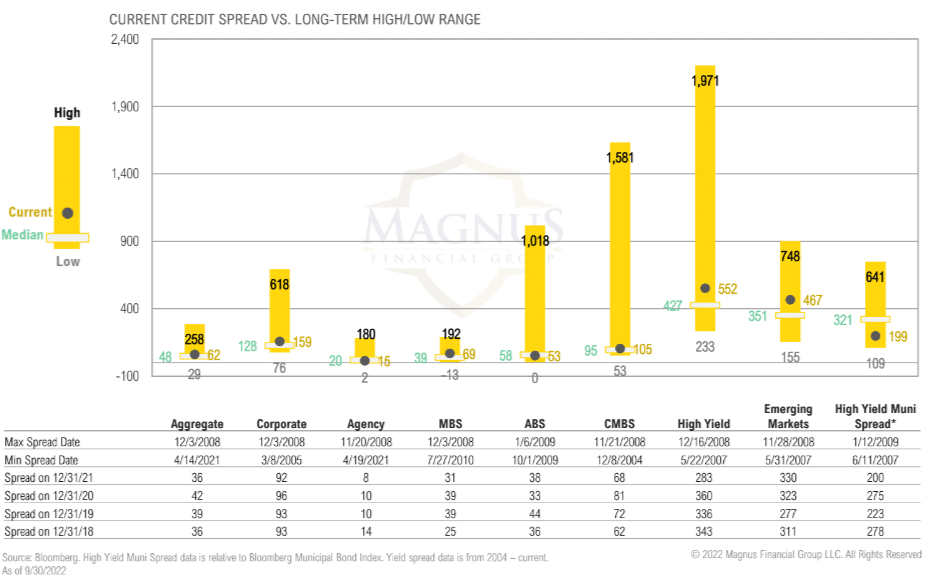
Commodities & The Yield Curve
Collapse in copper/gold ratio—a proxy for the real economy vis-à-vis financial assets—suggests Treasury yields may head lower
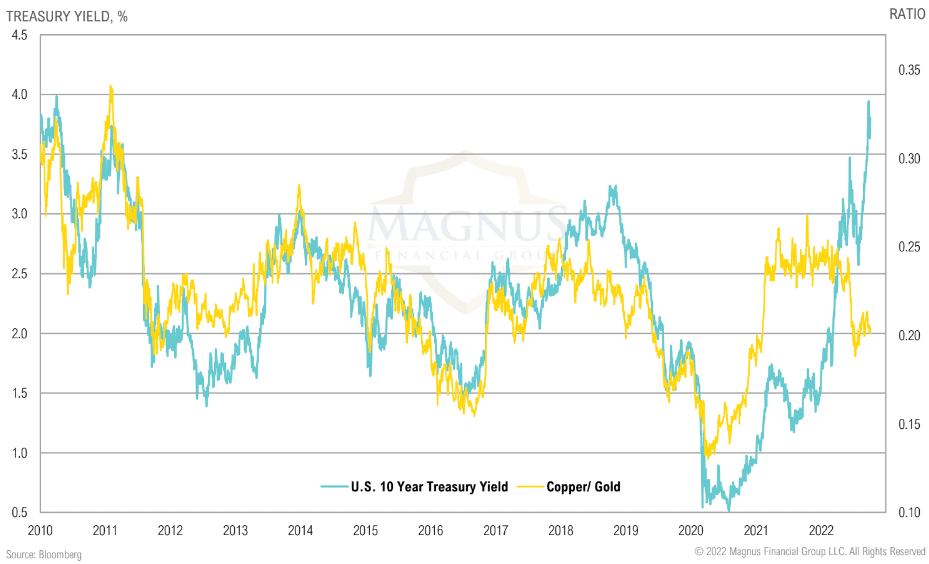
Global Rates
The U.S. bond market remains relatively higher yield, which could help keep U.S. rates somewhat contained
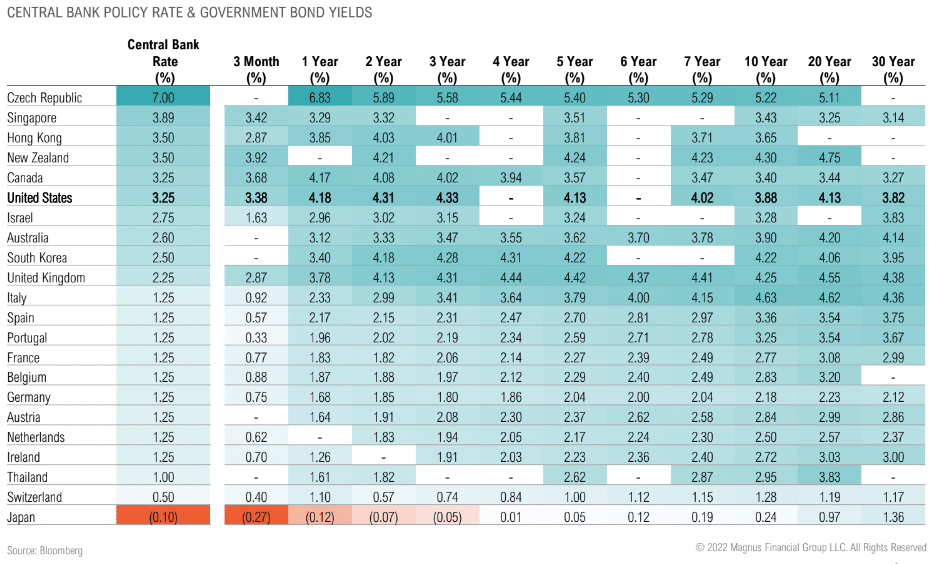
Treasury Spreads
Yield curve inversion signaling slowing growth; risky assets can generate strong short-term returns post inversion, but we don’t like “pennies in front of steam roller trades”

High Yield Spreads
Historically, high yield spreads above 6% have resulted in above average forward returns; high yield spread currently trading at 5.0%
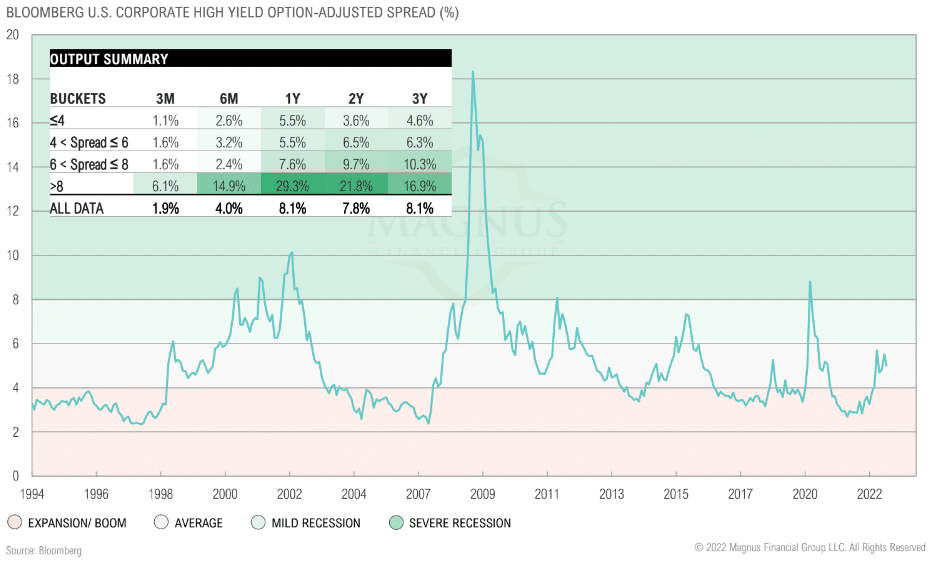
Historically, high yield spreads above 6% have resulted in above average forward returns; high yield spread currently trading at 5.0%
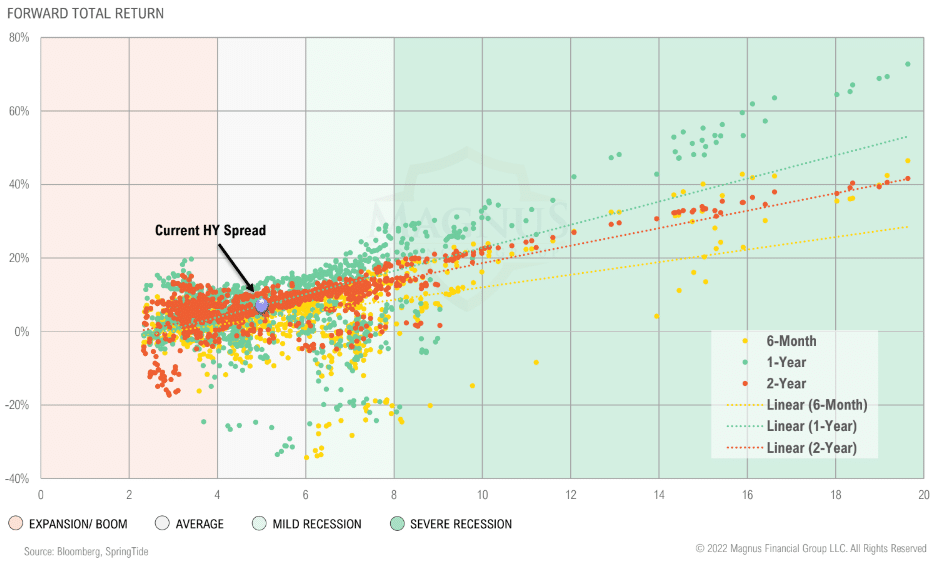
Treasury Issuance
Q4 net issuance expected to be $400Bn
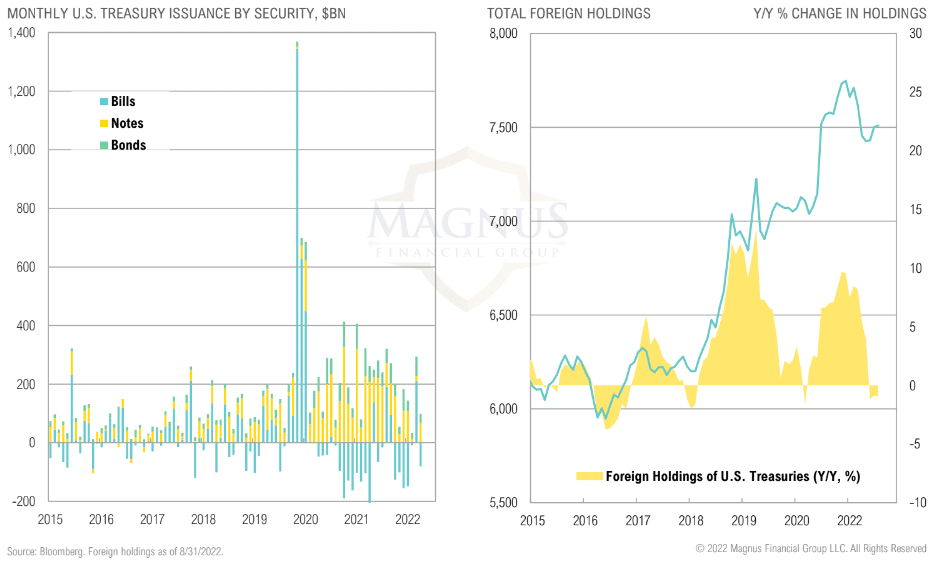
Real Assets
The supply chain is slowly improving, but it’s still far from prepandemic levels. We still see significant lead times for electrical equipment, heavy industrial items and refined petroleum products. Labor shortages will continue to drive up wages as competition for skilled workers continues to increase. There simply are not enough skilled workers for the positions available.
– Dallas Fed Oil & Gas Survey, September 2022
Market Returns Summary
While energy gave back returns in September, it was the only area of the real assets and infrastructure category to be up in Q3; REITs continue to struggle in the rising rate environment
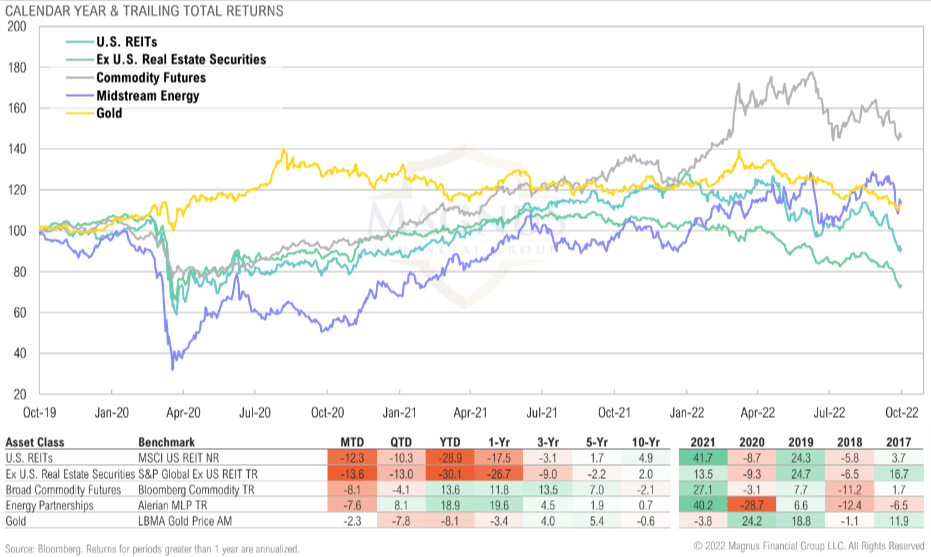
Commodities
Commodity roll yield suggests very tight global commodity markets, potential for strong forward returns (but obviously with risks)
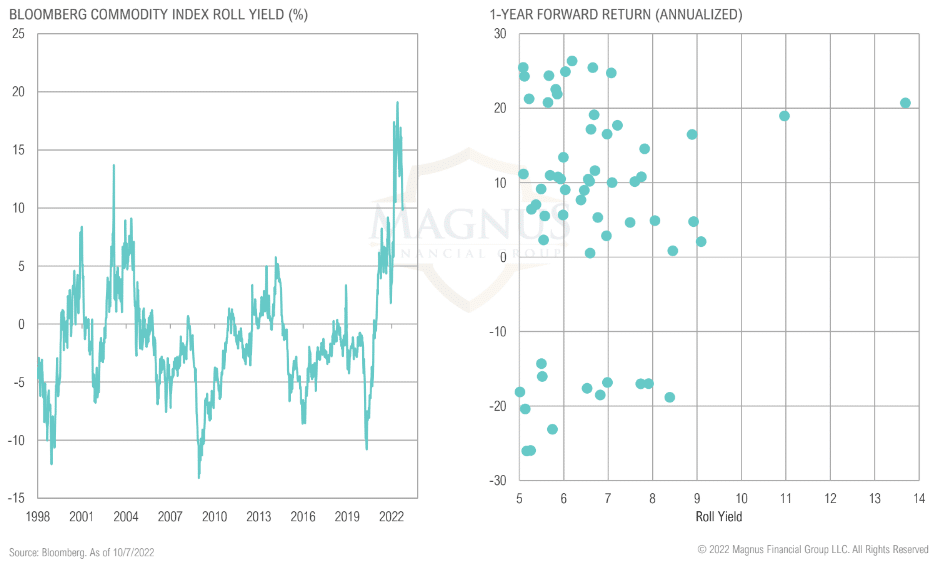
Oil & Natural Gas
Commodity roll yield suggests very tight global commodity markets, potential for strong forward returns (but obviously with risks)
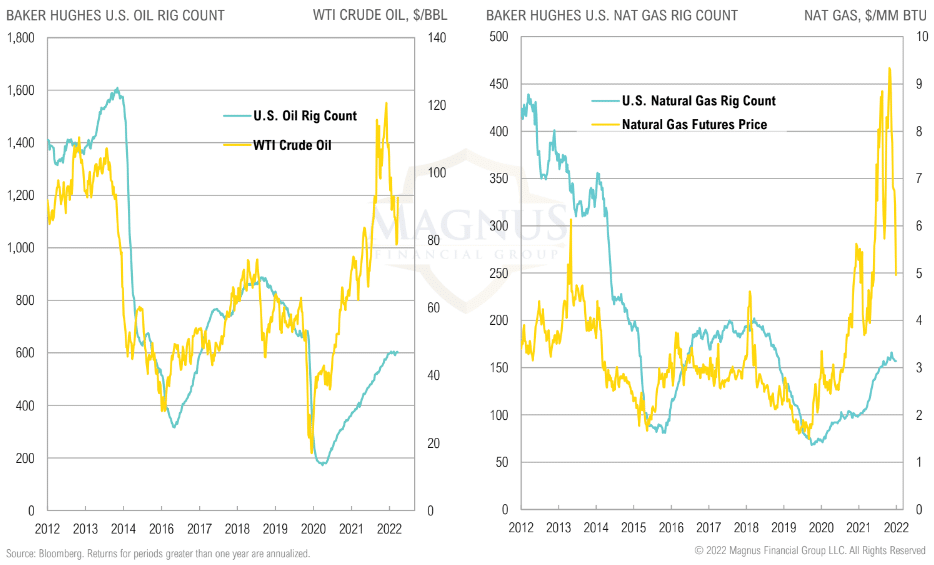
Oil Production/Consumption
Since COVID, drilling capex levels have been near the bottom of a 65-year range
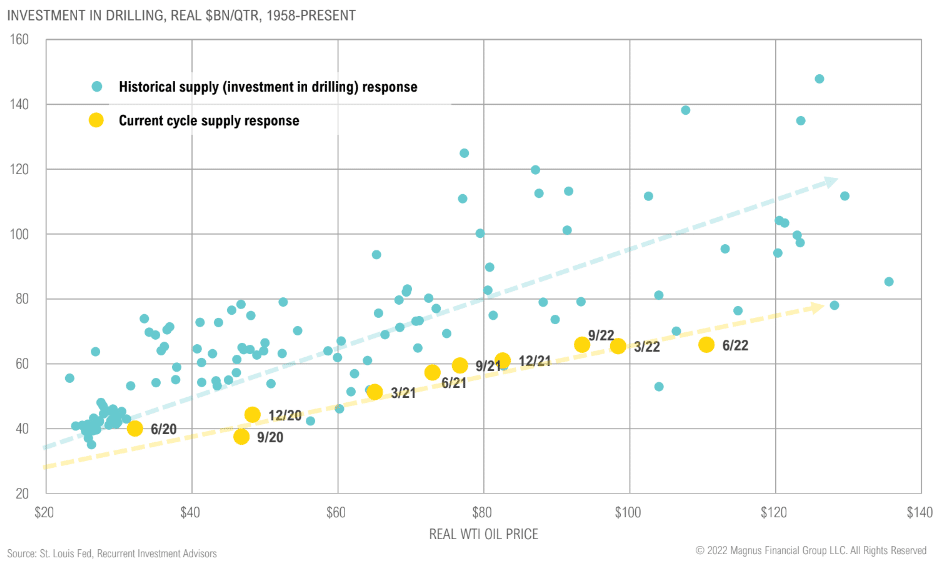
Oil & Natural Gas
Since COVID, drilling capex levels have been near the bottom of a 65-year range
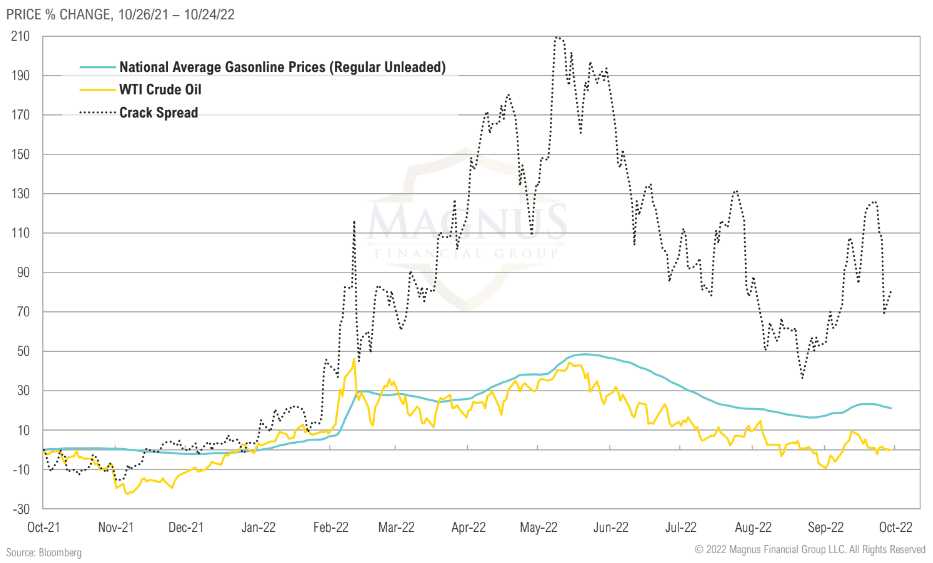
Yields
Midstream distribution yields trending lower as sector breaks out to upside but remain relatively attractive, free cash flow yields of energy sector remain attractive
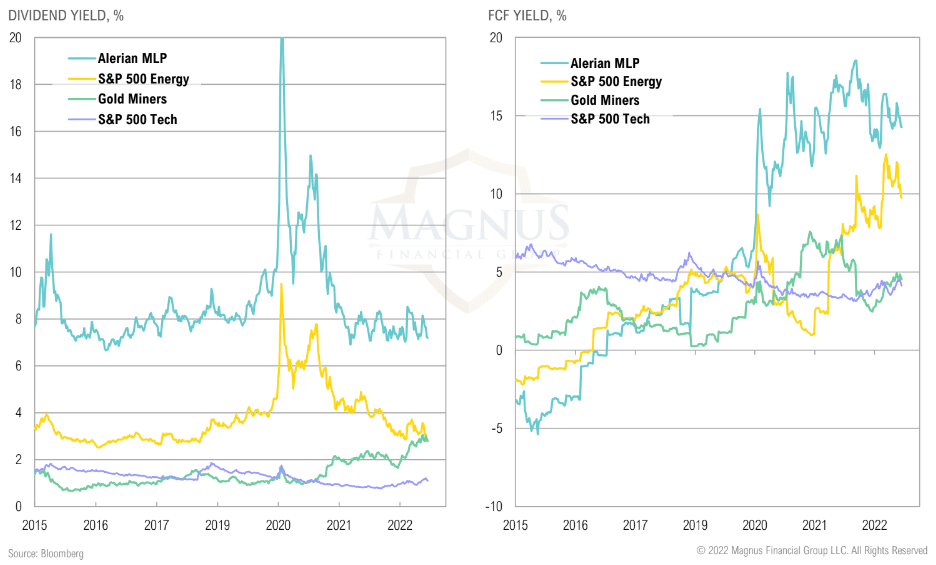
REITs
Midstream distribution yields trending lower as sector breaks out to upside but remain relatively attractive, free cash flow yields of energy sector remain attractive
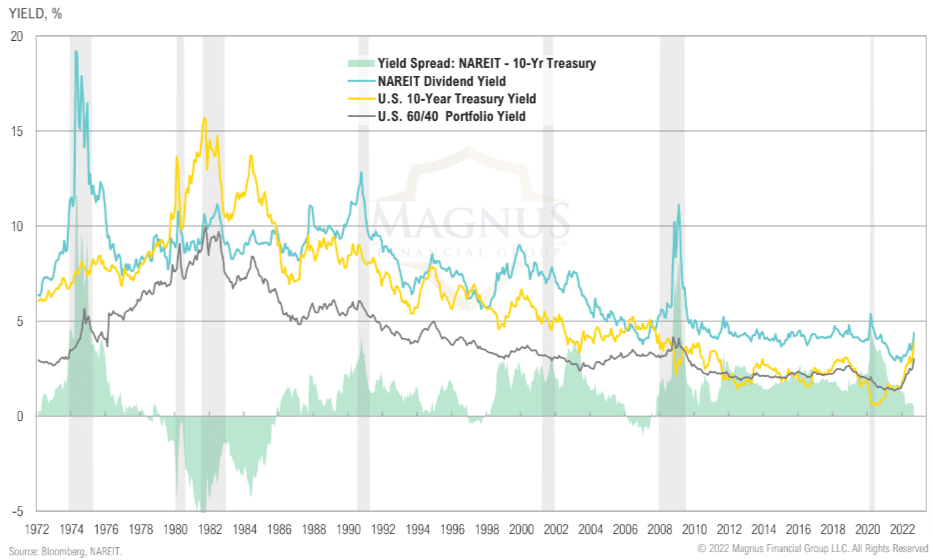
Gold Miner Fundamentals
Gold miners have been trying to catch up to improved cash flows, but risk remains that further gold price declines hurt future free cash flow yields
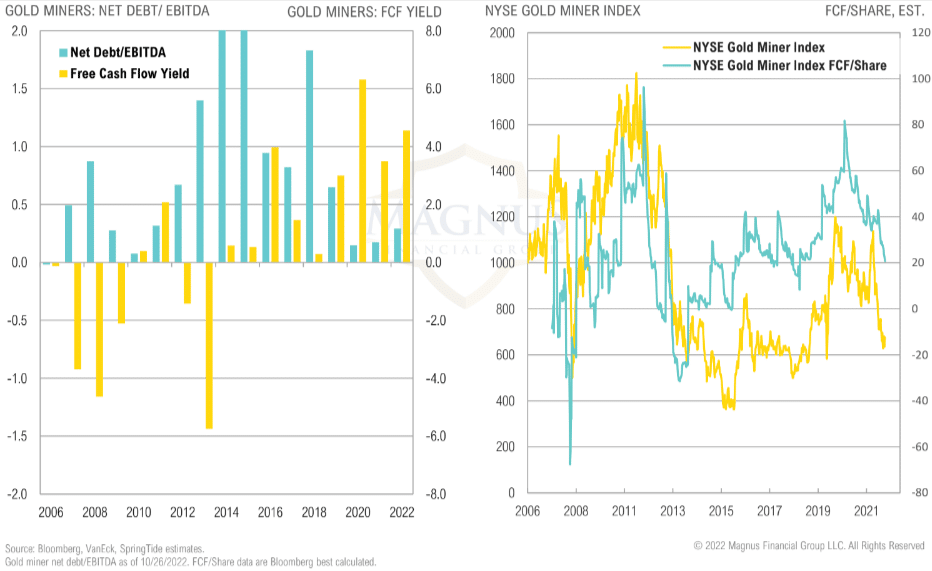
Gold Futures Positioning
Spec positioning in gold futures suggests markets are nearing capitulation, which has generally resulted in above-average forward returns
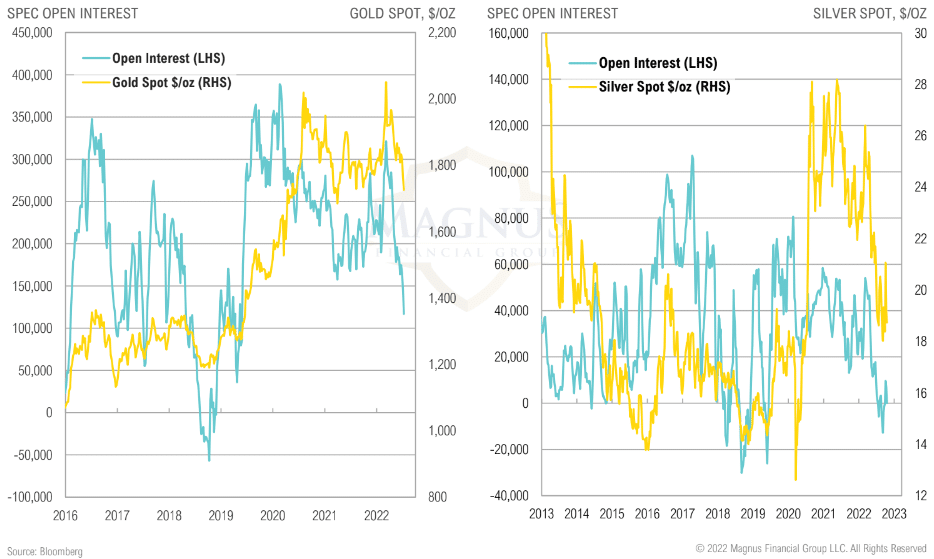
Opportunistic
I was born for a storm, and a calm does not suit me.
– Andrew Jackson, American lawyer, Planter, General, and Seventh president of the United States from 1829 to 1837
Market Returns Summary
Insurance-linked securities was the worst performing opportunistic asset class in Q3 as hurricane Ian threatens heavy losses; global macro is the only positive asset class YTD

CEF Discounts
CEF discounts have widened significantly from -6.4% in August to -9.6% in September; U.S. taxable bonds are trading at widest discount since 2018
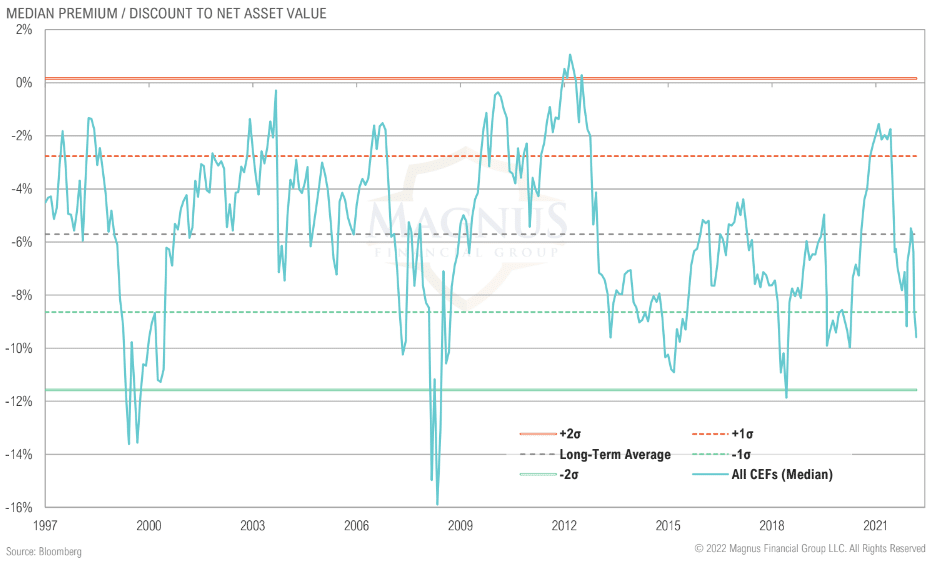
Asset Allocation
Markets tend to return to the mean over time
– Bob Farrell, Merrill Lynch Strategist and Market Historian (Bob Farrell’s 10 Rules)
Stocks & Bonds
2021 was an unusual year for global stocks and bonds, 2022 even more so; again, highlighting the unusual predicament the Fed is in
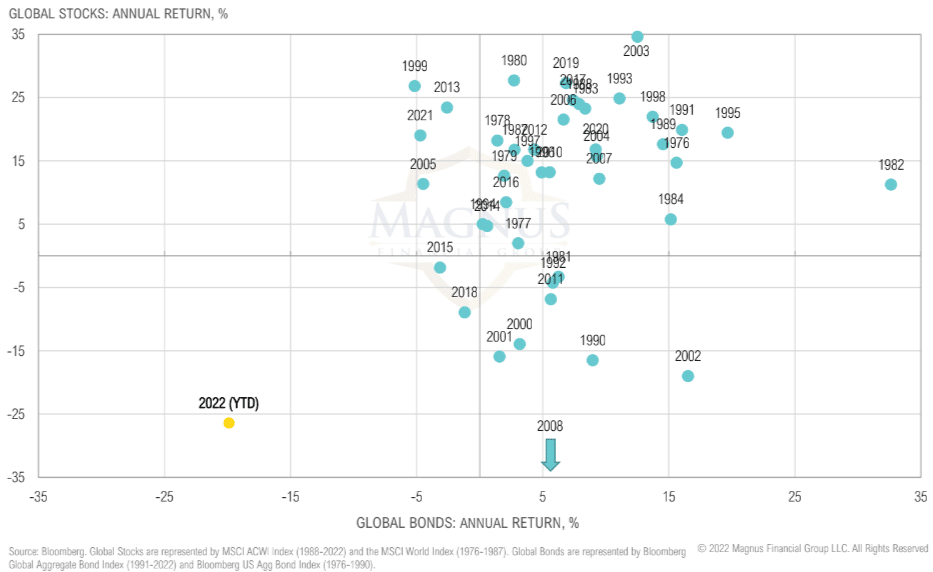
CMEs (As of 6/30/2022)
Expected 10-year returns for fixed income assets rose substantially as yields continued to rise throughout the quarter

Fixed income returns saw sizable improvements over shorter time periods and now offer similar returns to U.S. Large Cap Stocks over 10 years (pre-inflation, which is big unknown)
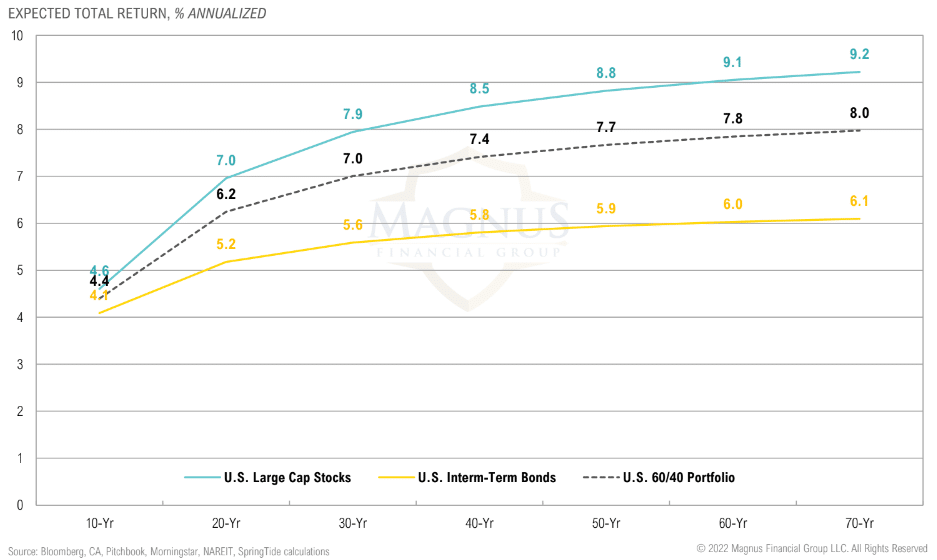
Private Markets
Private market interval funds have significantly outperformed their passive investable benchmarks YTD as net-asset-values yet to catch down to reality
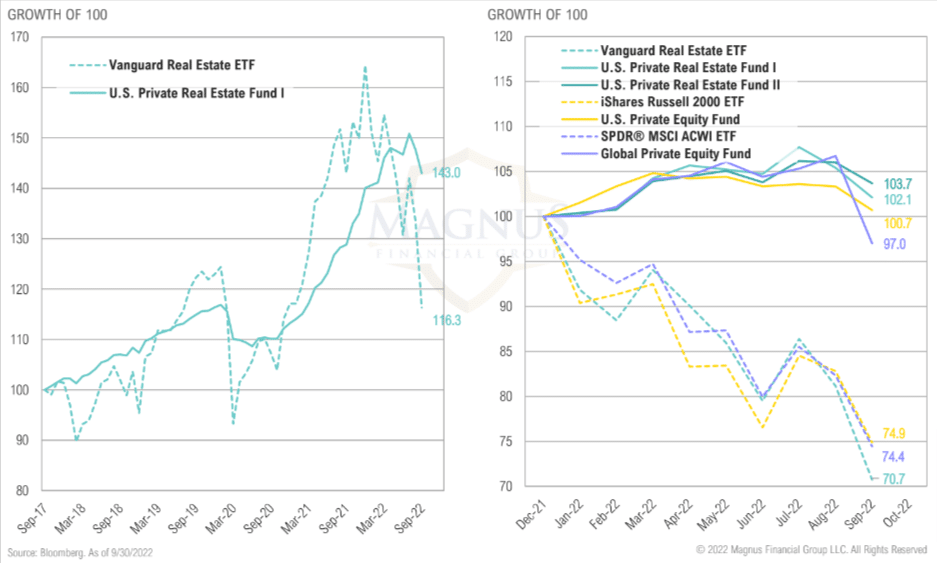
Appendix 1
Asset Class Definitions
ASSET CLASS BENCHMARKS
Asset class performance was measured using the following benchmarks:
U.S. Large Cap Stocks: S&P 500 TR Index
U.S. Small & Micro Cap Stocks: Russell 2000 TR Index
Intl Dev Large Cap Stocks: MSCI EAFE GR Index
Intl Dev Small & Micro Stocks: MSCI EAFE GR Index
Emerging & Frontier Market Stocks: MSCI Emerging Markets GR Index
Global Stocks: MSCI ACWI GR Index
Private Equity: Cambridge Associates U.S. Private Equity
Venture Capital: Cambridge Associates U.S. Venture Capital
U.S. Interm-Term Muni Bonds: Bloomberg Barclays 1-10 (1-12 Yr) Muni Bond TR Index
U.S. High Yield Muni Bonds: Bloomberg Barclays High Yield Muni TR Index
U.S. Interm-Term Bonds: Bloomberg Barclays U.S. Aggregate Bond TR Index
U.S. High Yield Bonds: Bloomberg Barclays U.S. Corporate High Yield TR Index
U.S. Bank Loans: S&P/LSTA U.S. Leveraged Loan Index
Intl Developed Bonds: Bloomberg Barclays Global Aggregate ex-U.S. Index
Emerging & Frontier Market Bonds: JPMorgan EMBI Global Diversified TR Index
Public BDCs: S&P BDC Index
U.S. REITs: MSCI U.S. REIT GR Index
Ex U.S. Real Estate Securities: S&P Global Ex-U.S. Property TR Index
Private Real Estate: Cambridge Associates Real Estate
Commodity Futures: Bloomberg Commodity TR Index
Midstream Energy: Alerian MLP TR Index
Gold: LBMA Gold Price
Long-Short Equity: HFRI Equity Hedge Index
Global Macro: HFRI Macro-CTA Index
Relative Value: HFRI Relative Value Index
Closed-End Funds: S-Network Composite Closed-End TR Index
Insurance-Linked Securities: Swiss Re Global Cat Bond TR Index
Digital Assets: MVIS Crypto Compare Digital Assets 25 Index
Cash & Cash Equivalents: Bloomberg Barclays U.S. T-Bill 1-3 Month TR Index
U.S. Short-Term Muni Bonds: Bloomberg Barclays Municipal 1-3 Yr TR Index
U.S. Short-Term Bonds: Bloomberg Barclays U.S. Agg 1-3 Yr TR Index
U.S. 60/40: 60% S&P 500 TR Index 40% Bloomberg Barclays U.S. Aggregate Bond TR Index
Global 60/40: 60% MSCI ACWI GR Index 40% Bloomberg Barclays Global Aggregate Bond TR Index

